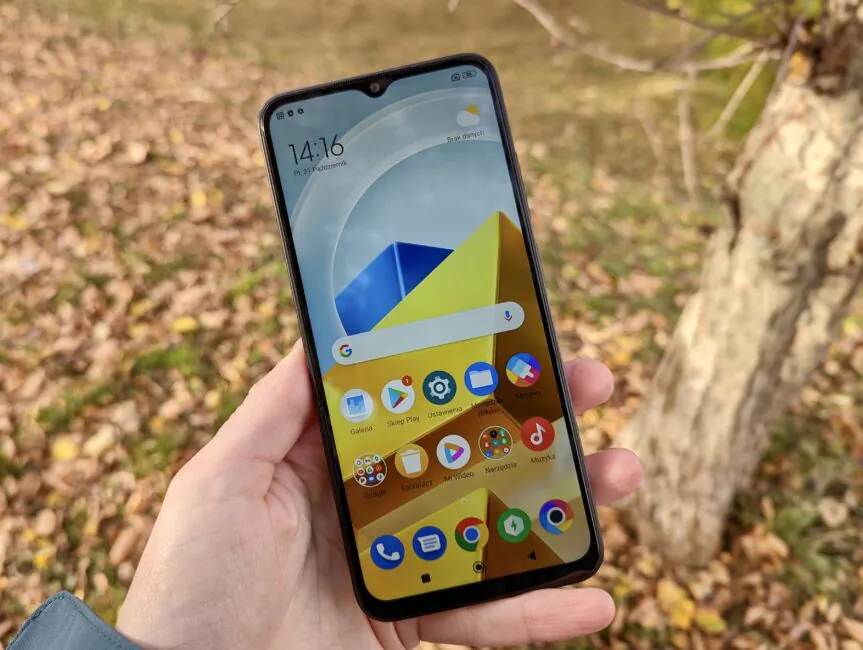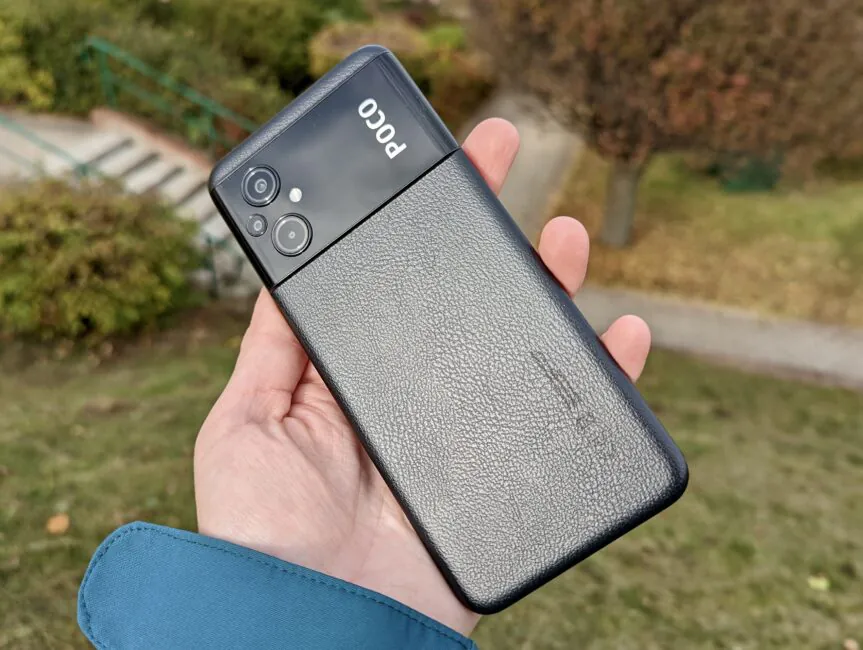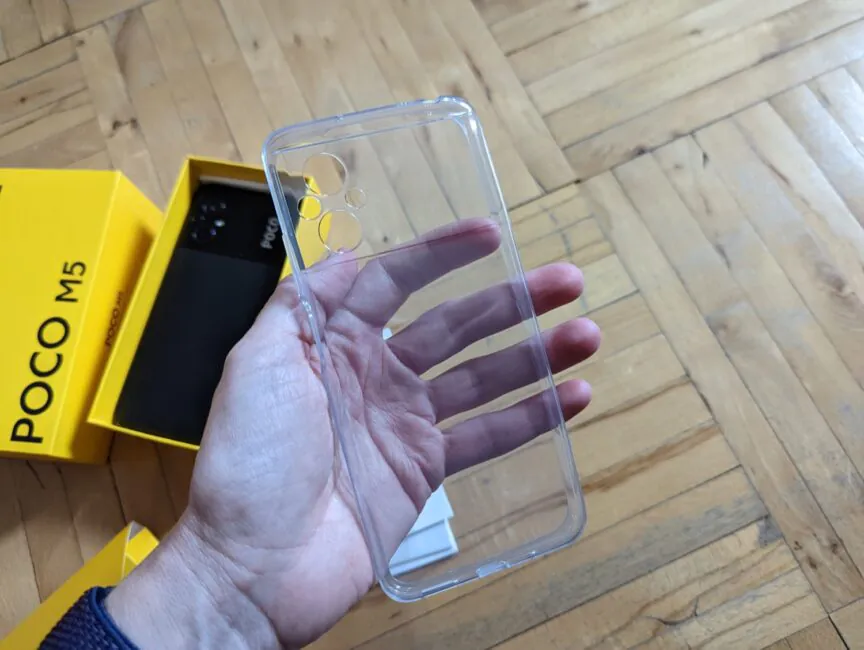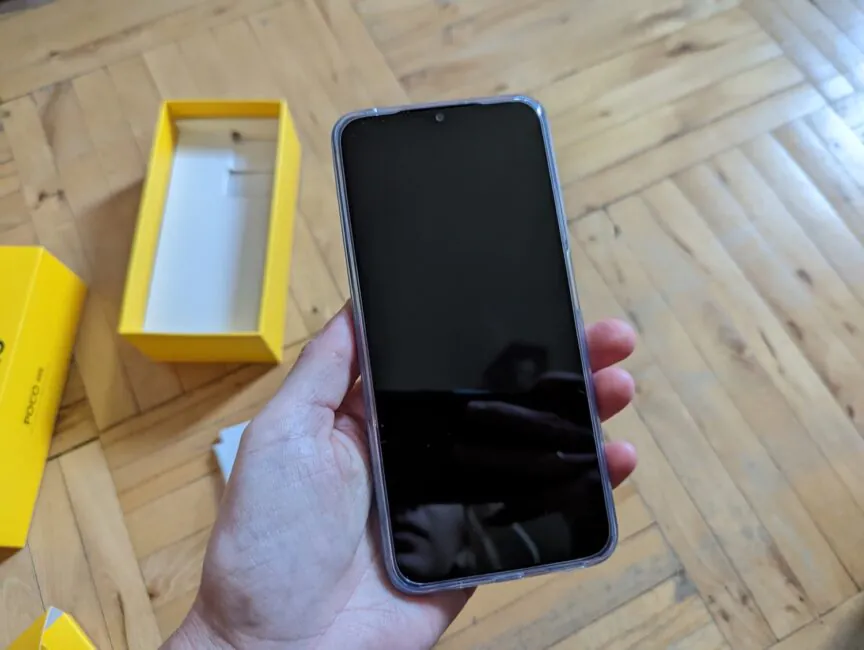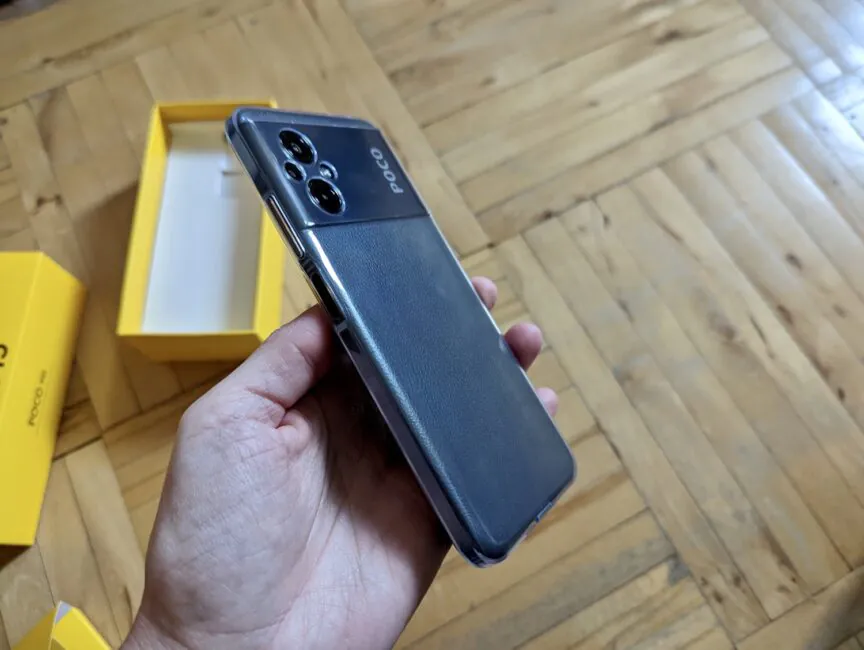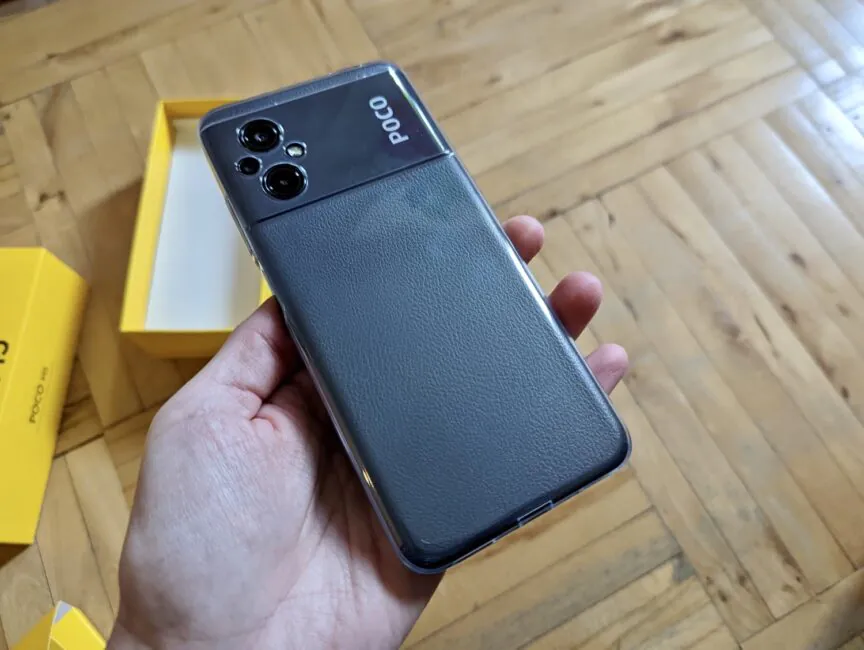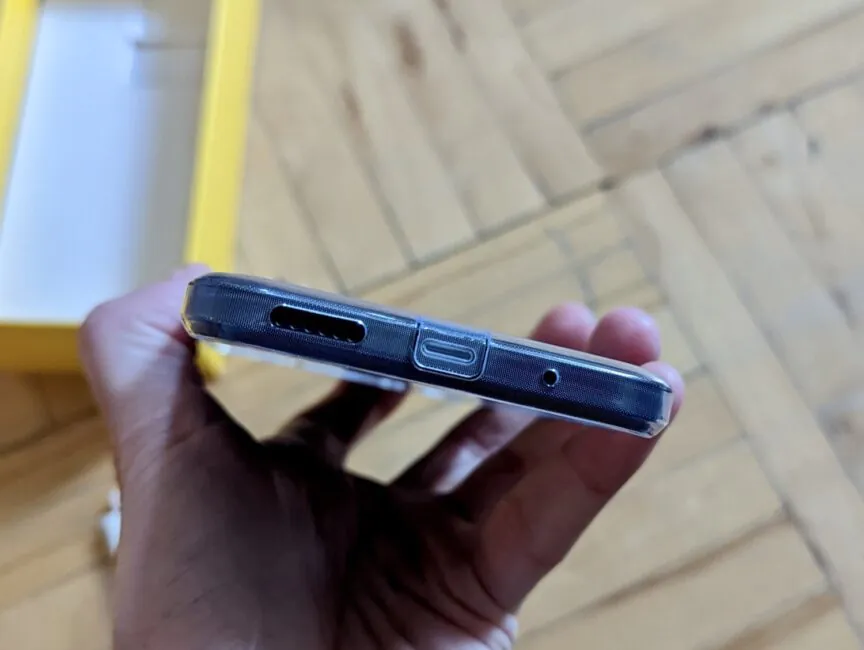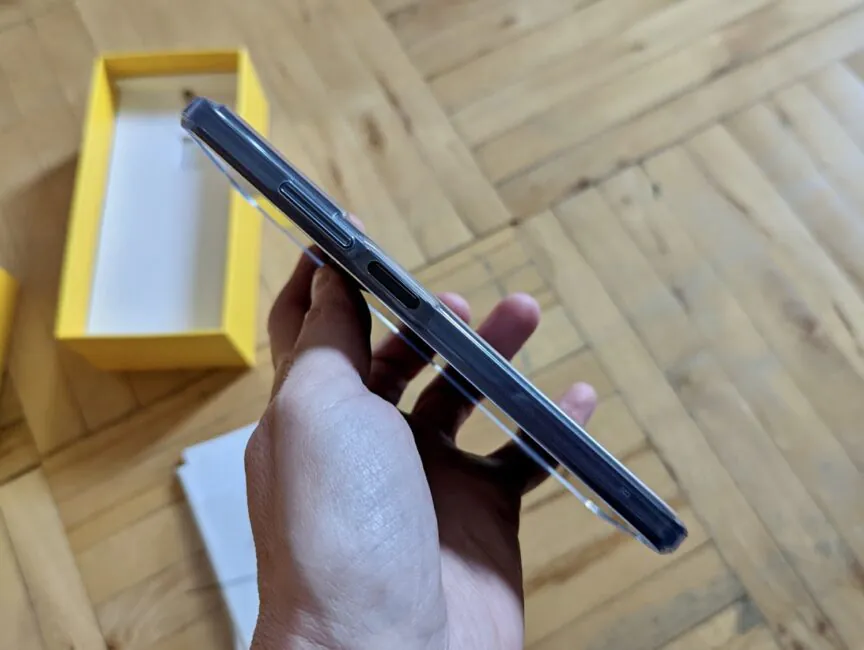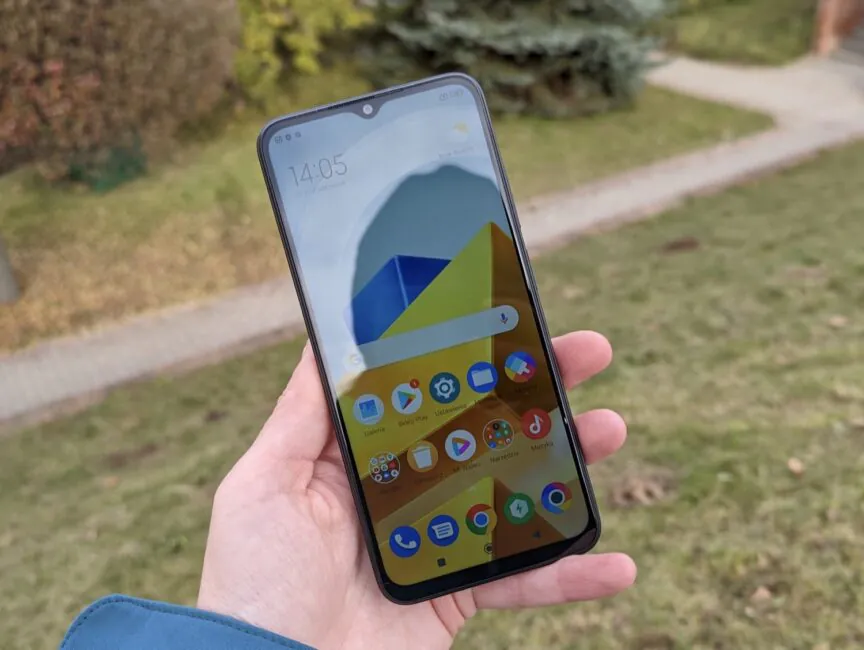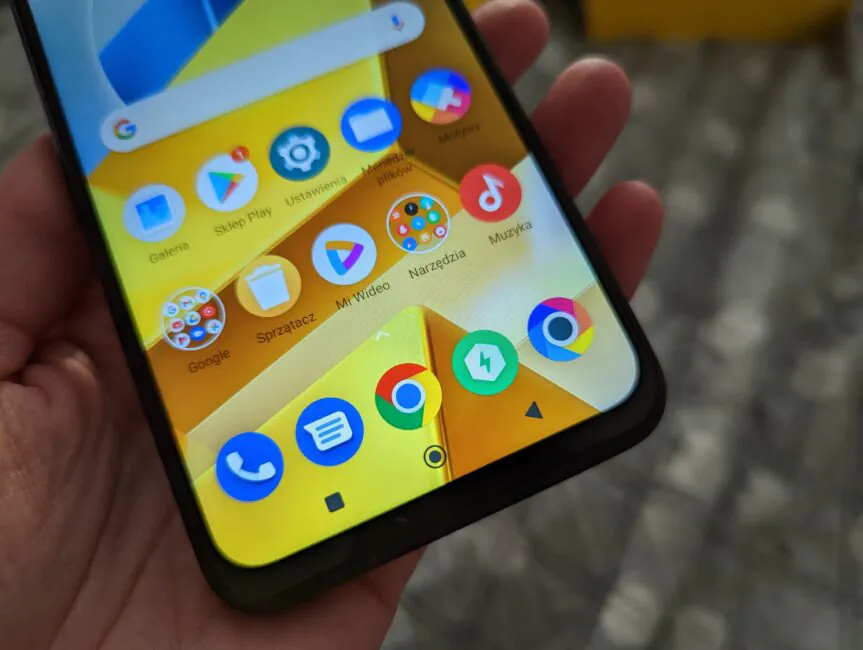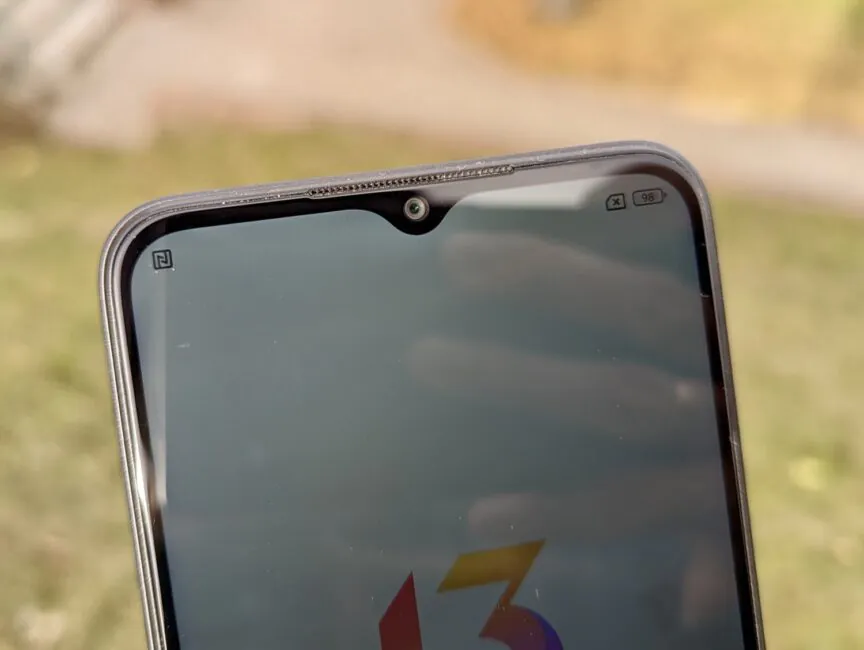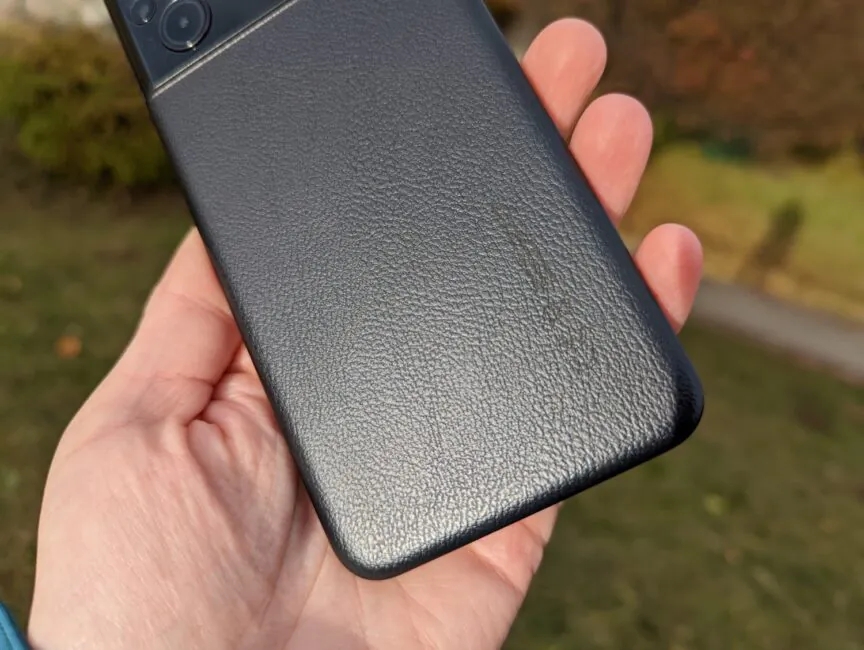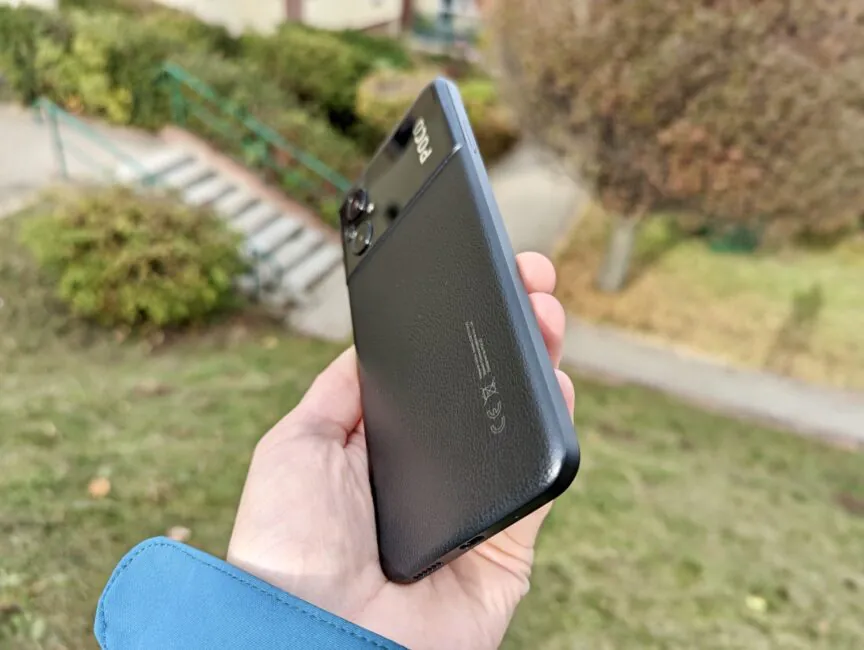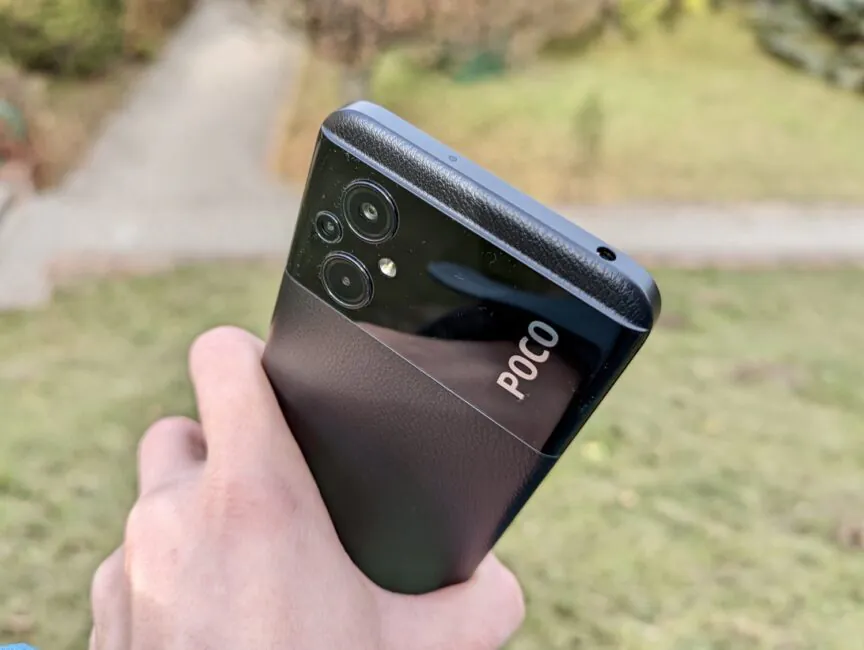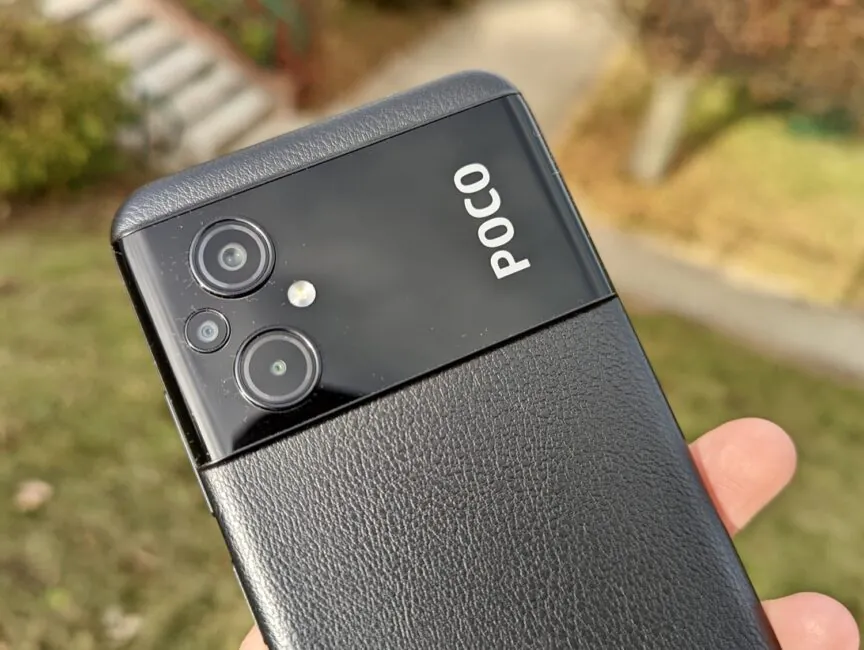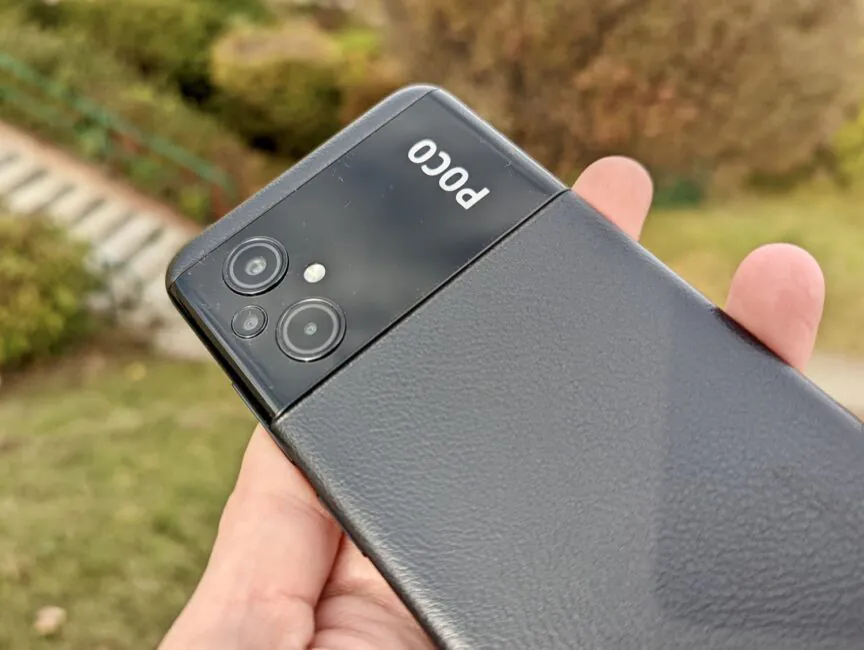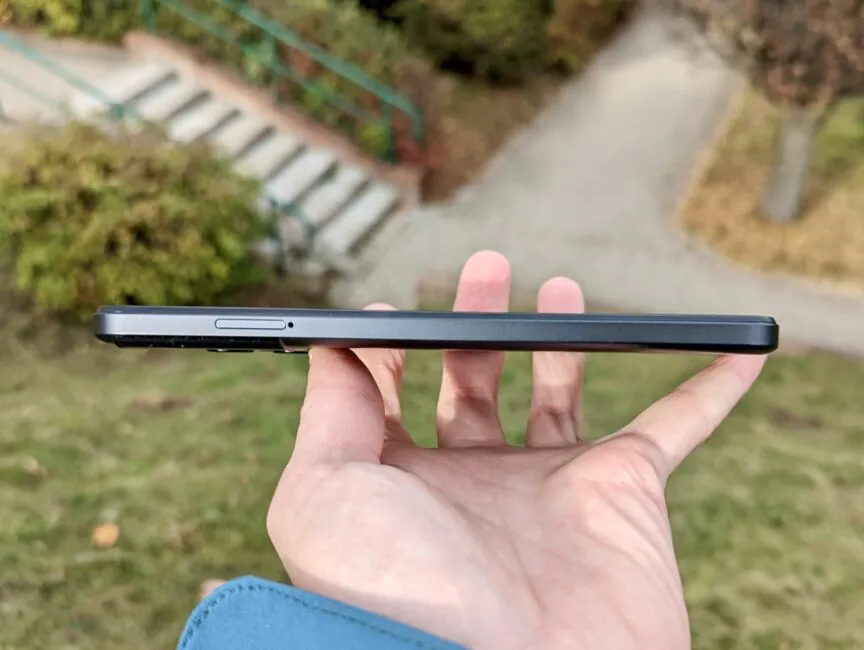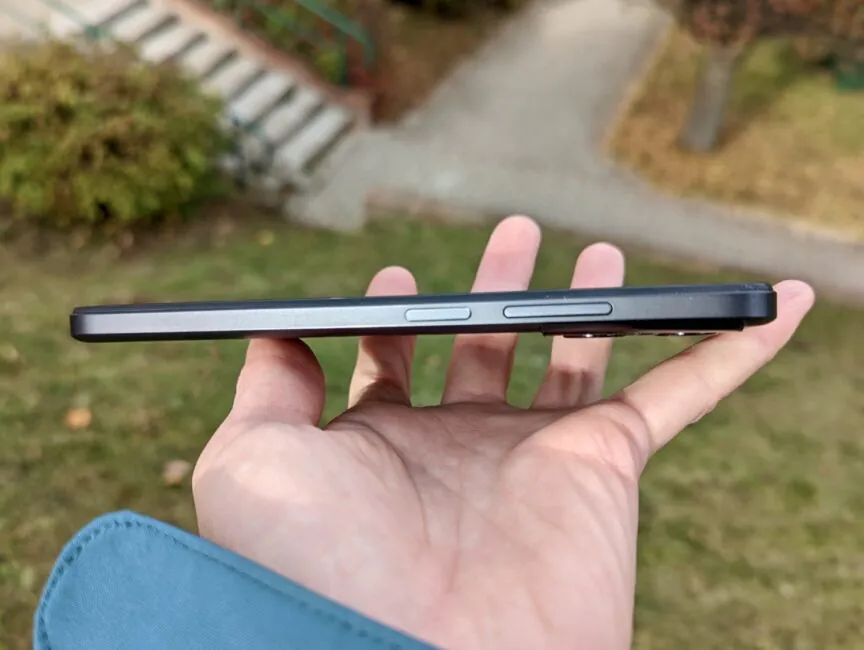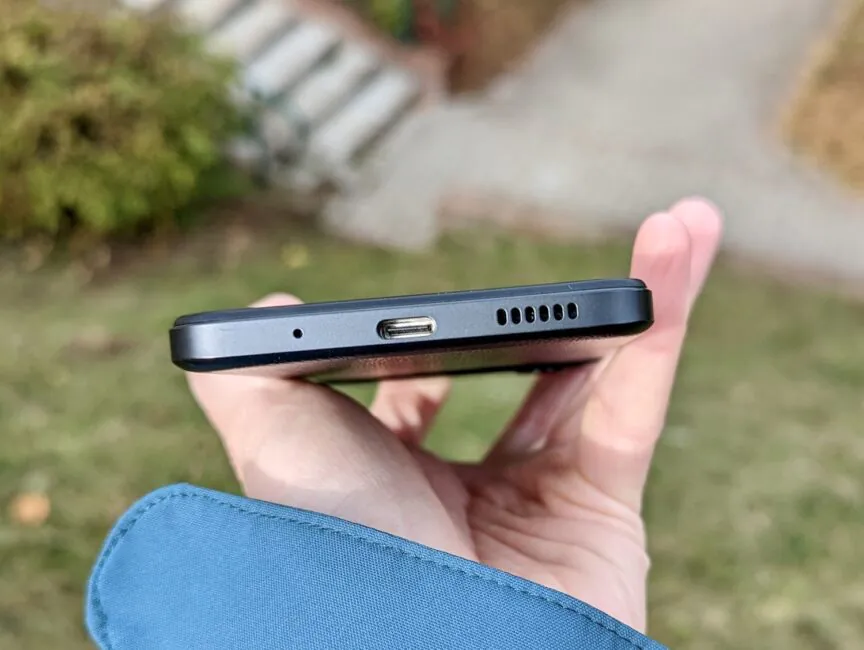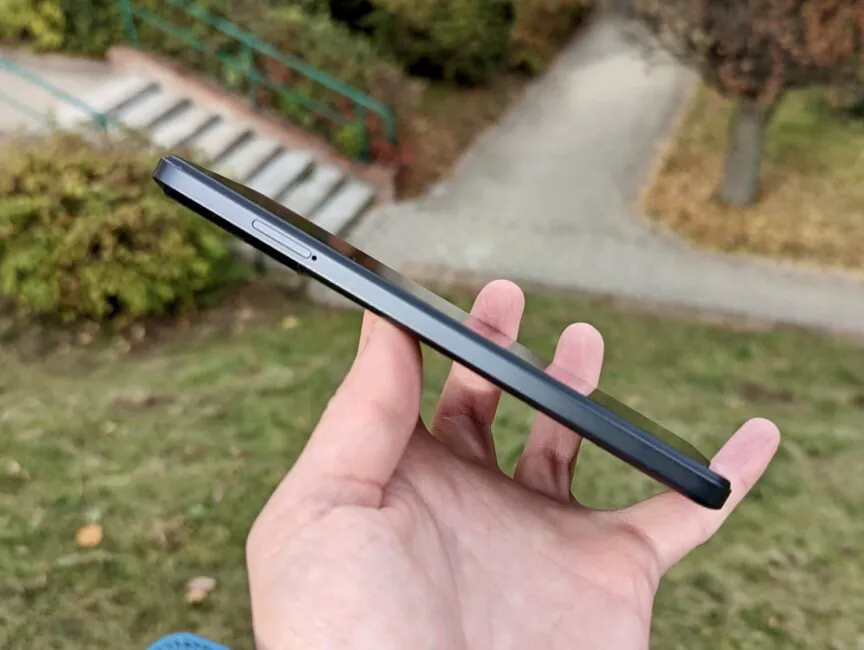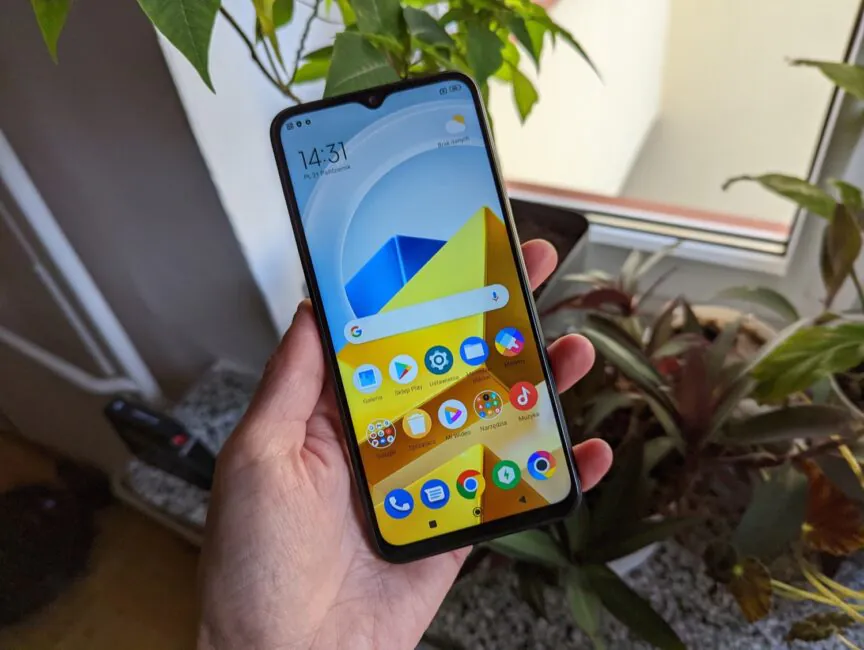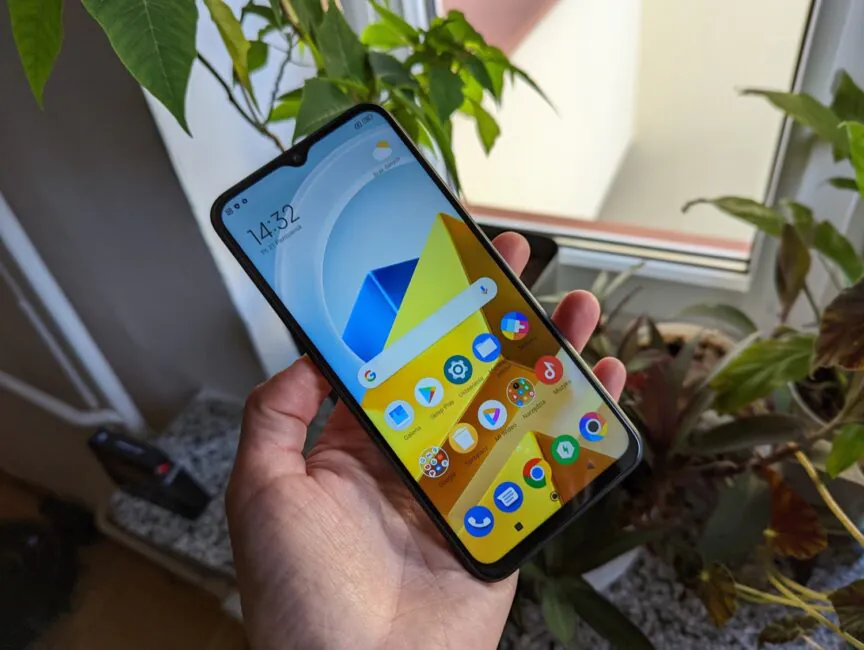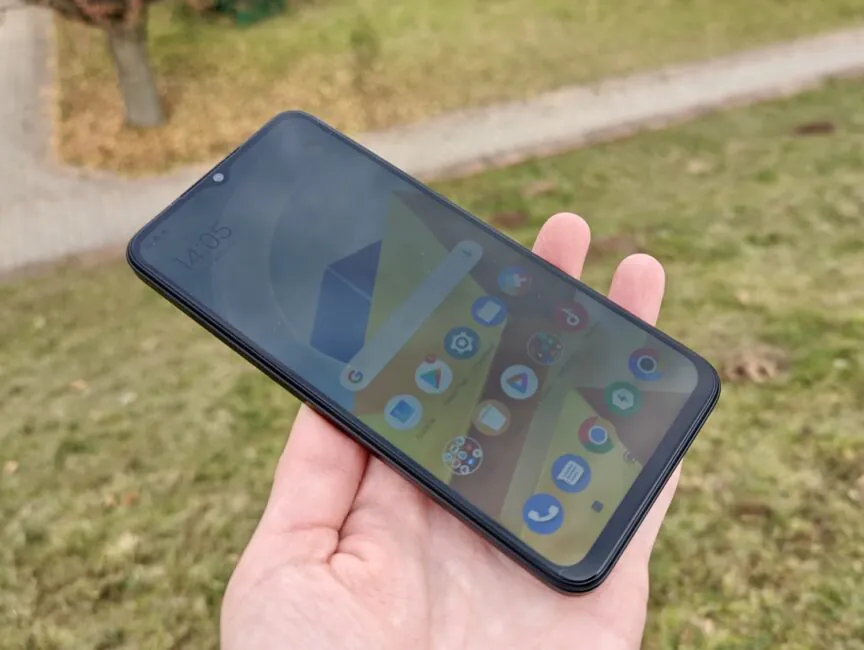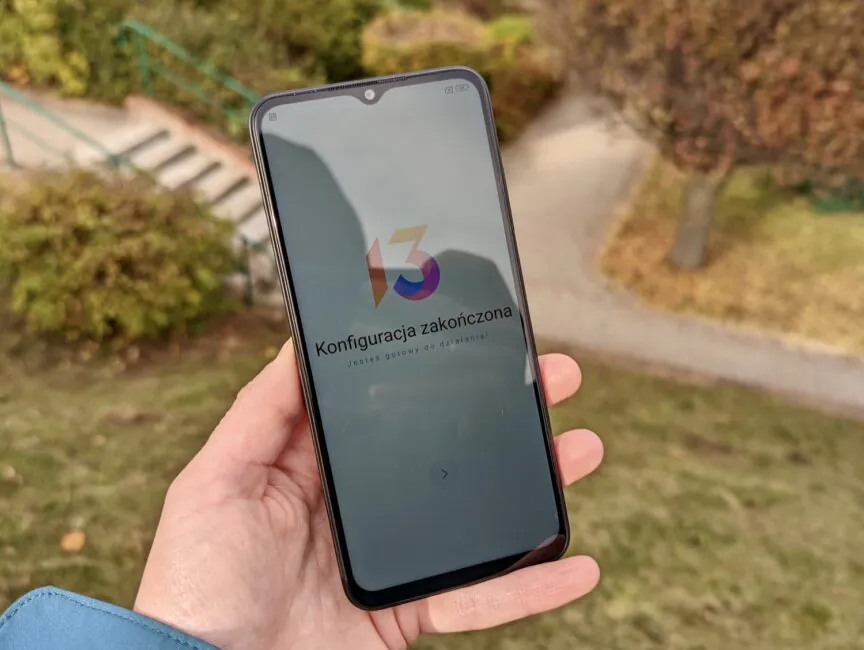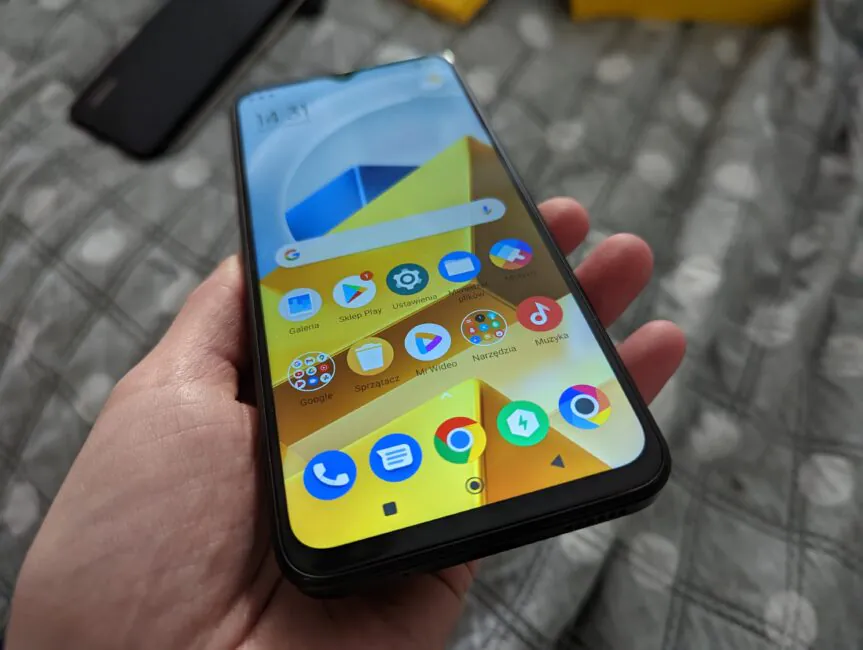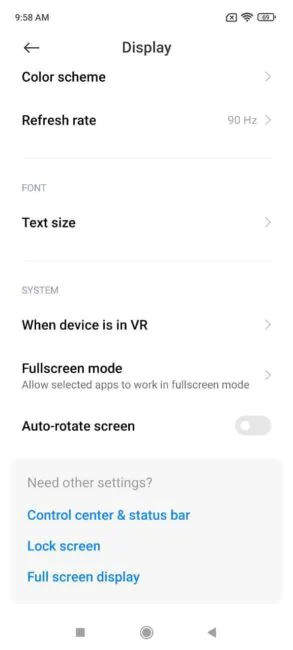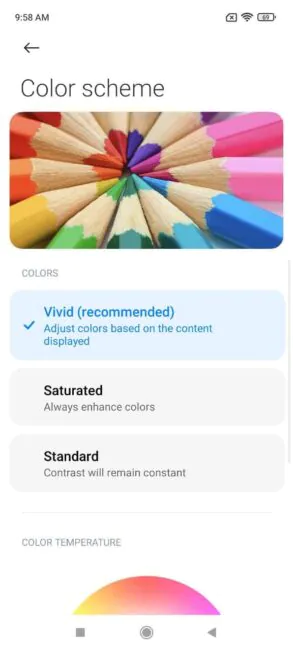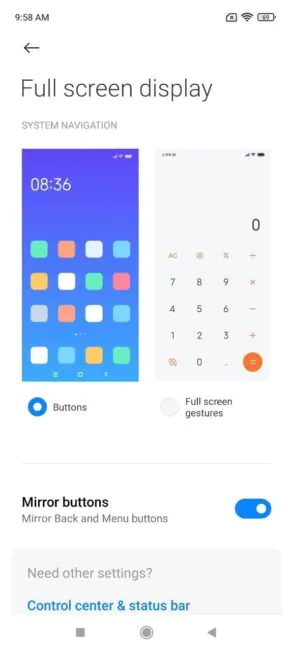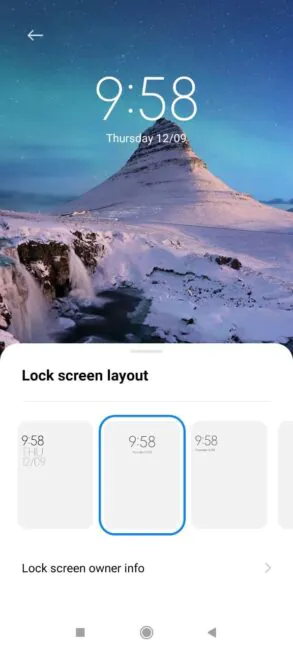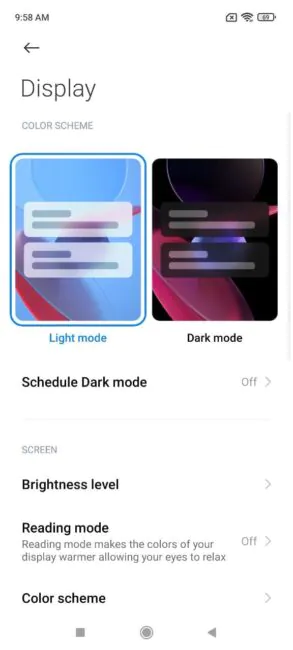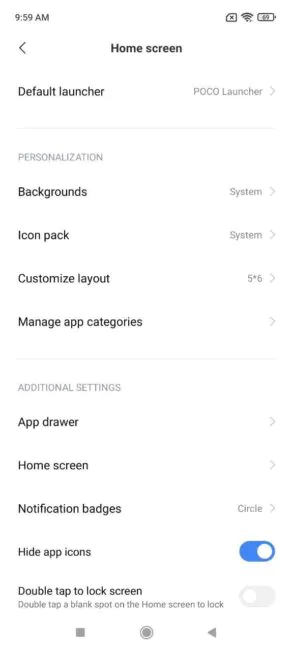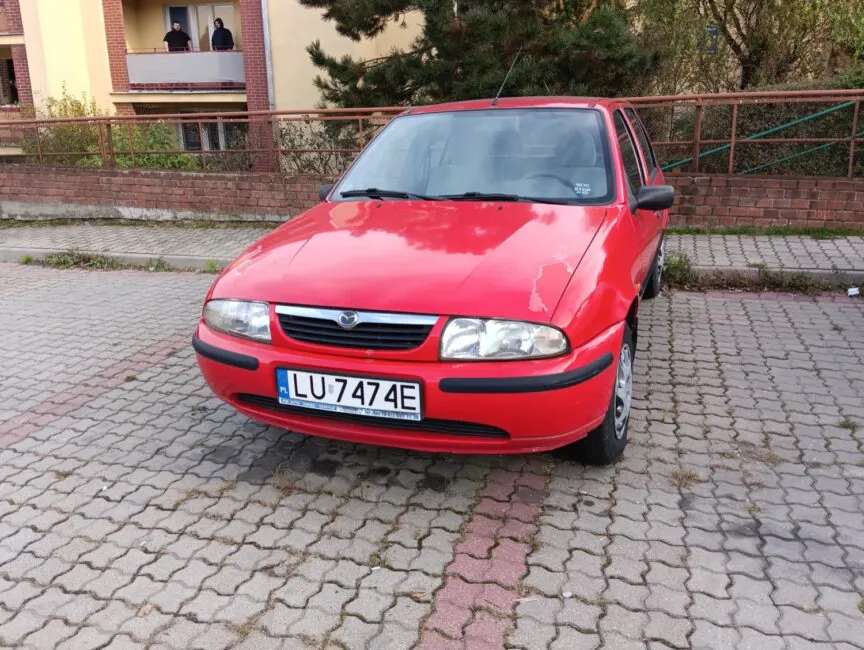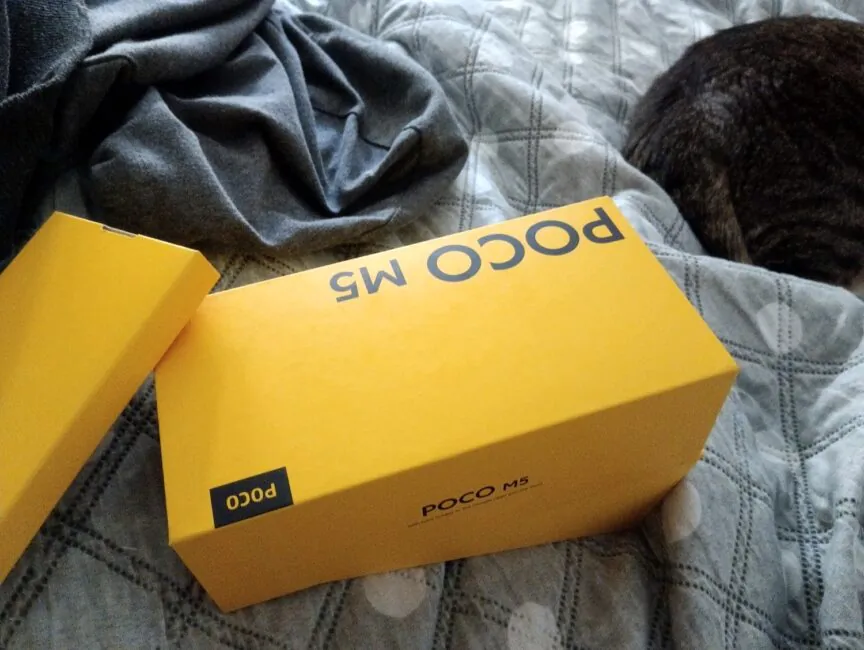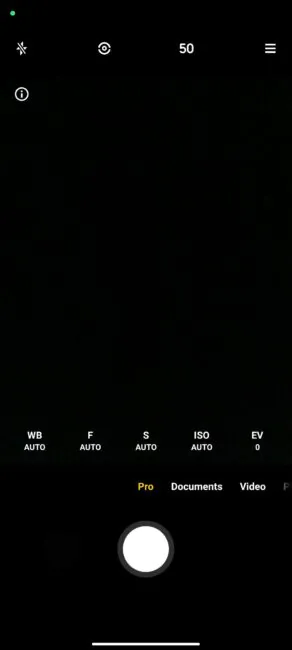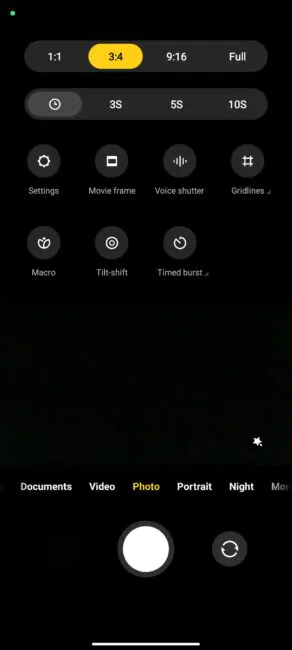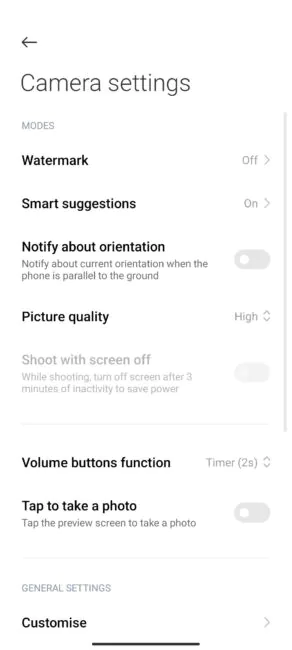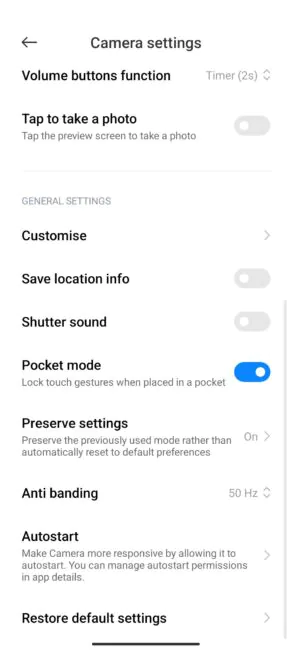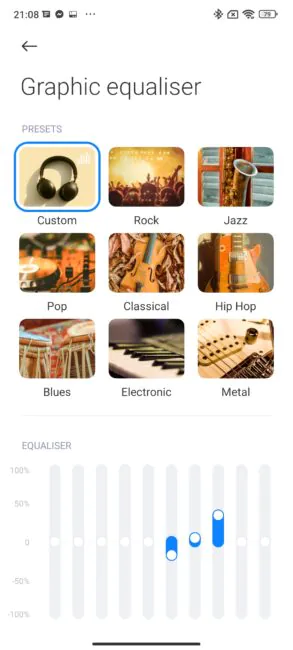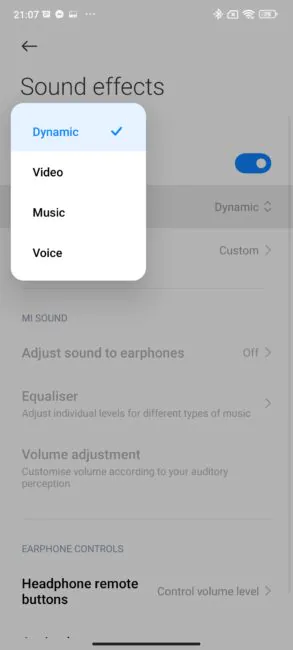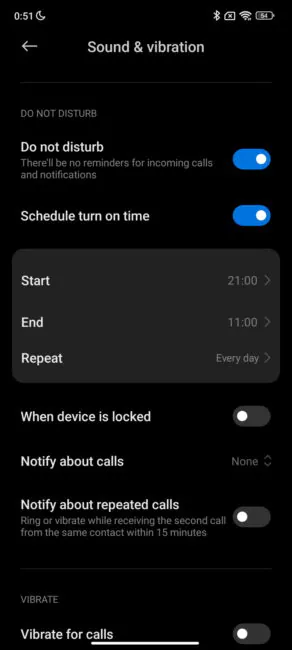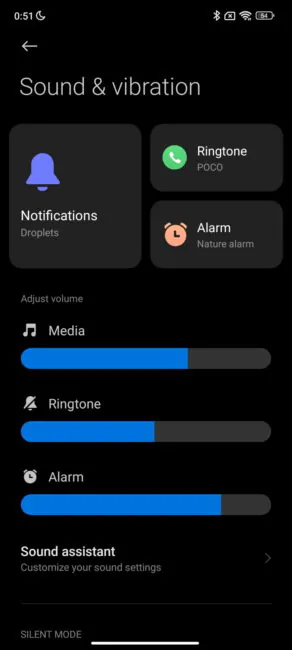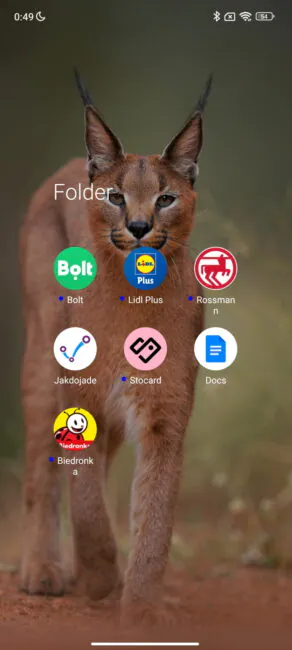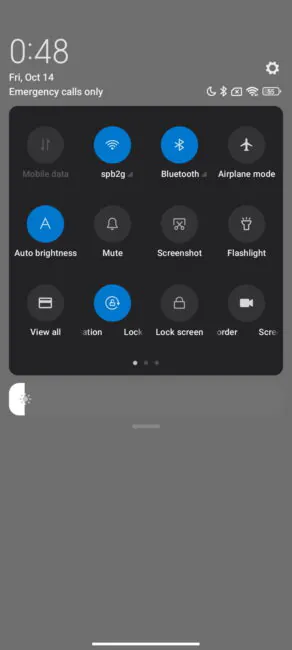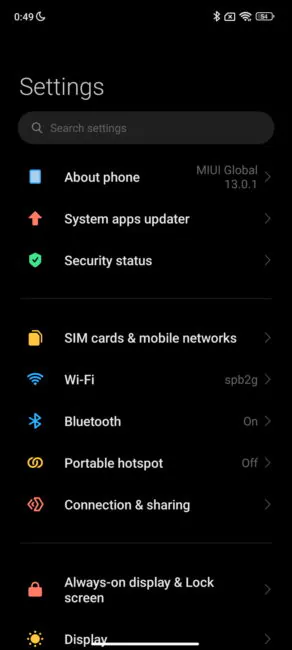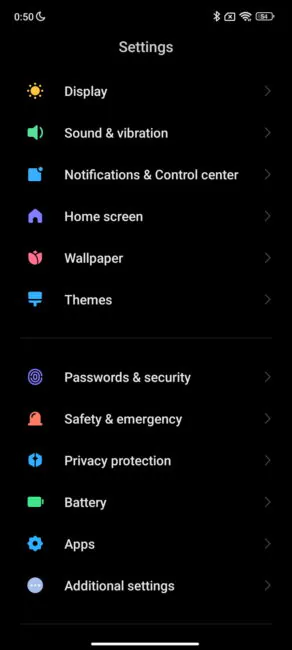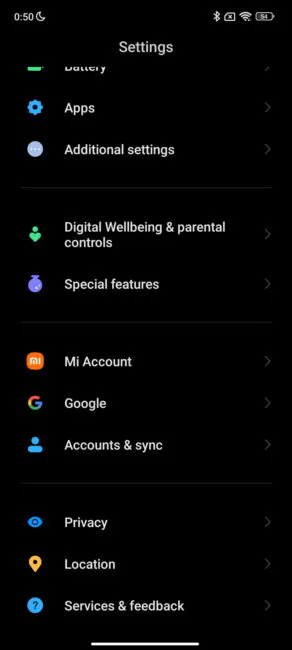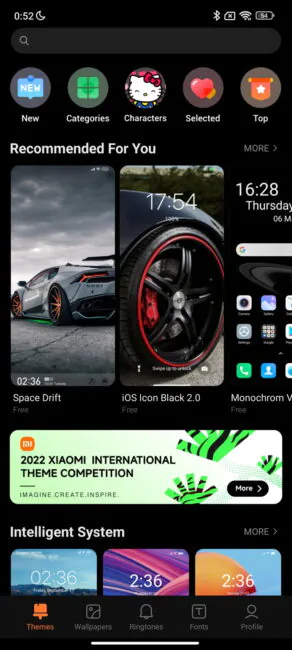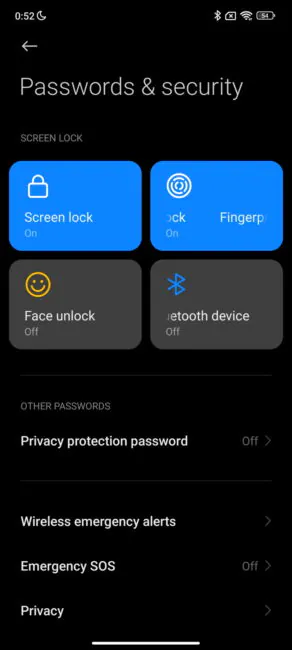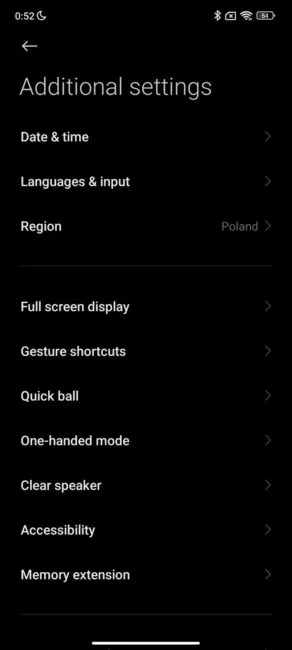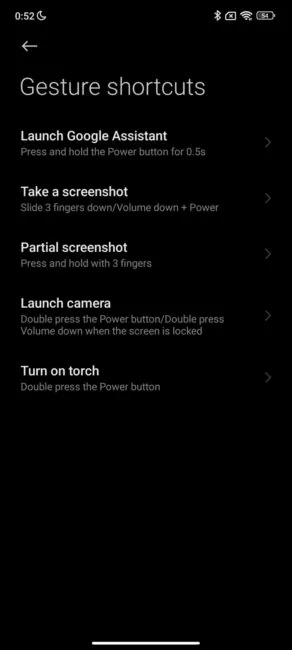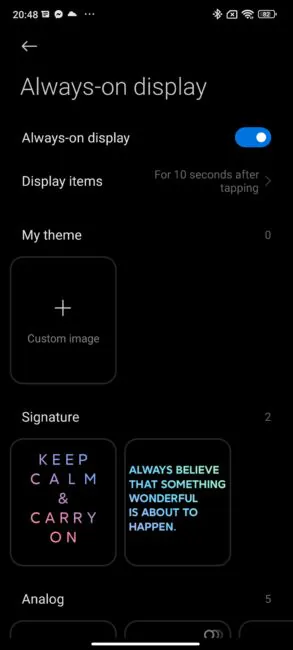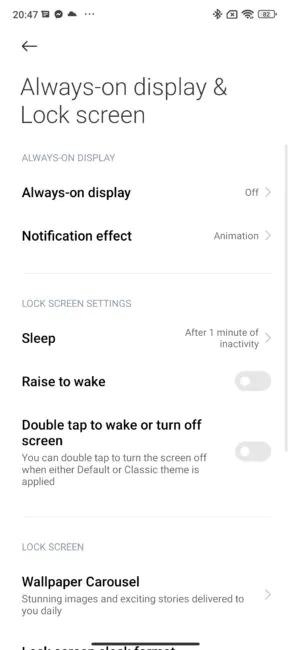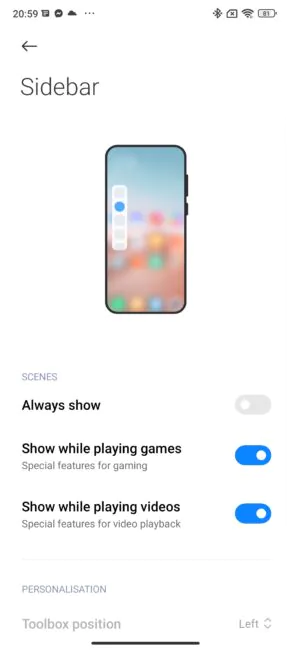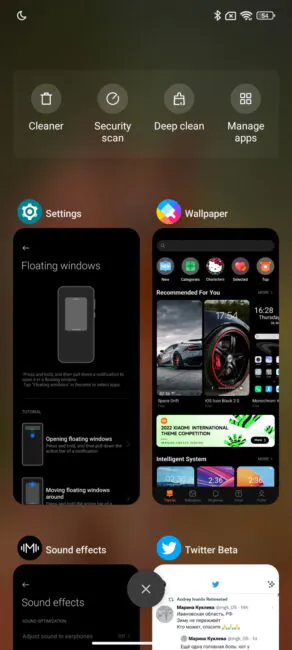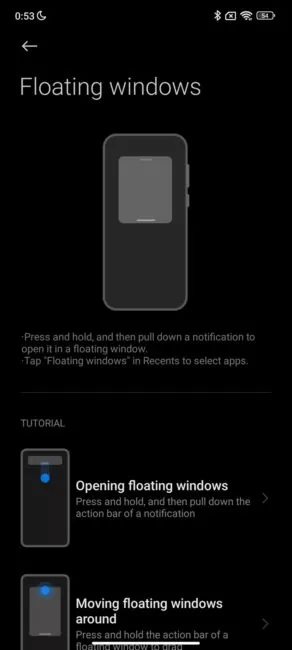© ROOT-NATION.com - Use of content is permitted with a backlink.
We have already met the new POCO M5s, which on closer inspection turned out to be an “oldie”, or rather a copy of the Redmi from a year ago. The M5s was released in September, paired with the POCO M5. However, these “two good men” were not “identical in appearance,” which is understandable. One was a remake, and the other was an independent model. Today we will talk about the second one – POCO M5.
Positioning in the lineup and price
The phone cost about $180 when it went on sale, but in 1.5 months it was available almost everywhere at a discount, for $160. We are talking about the junior model with 4/64 GB of memory. The 4/128 GB version is slightly more expensive.
What’s the difference between the hardware? The models have different processors (although they are almost identical in performance), different screens (M5 has 90 Hz IPS, M5s has 60 Hz AMOLED), different fast charging speeds (18 W for M5 vs. 33 W for M5s), camera sets (not in favor of the hero of the review), Bluetooth versions, and M5 does not have stereo speakers. You can compare the models, for example, at this link.
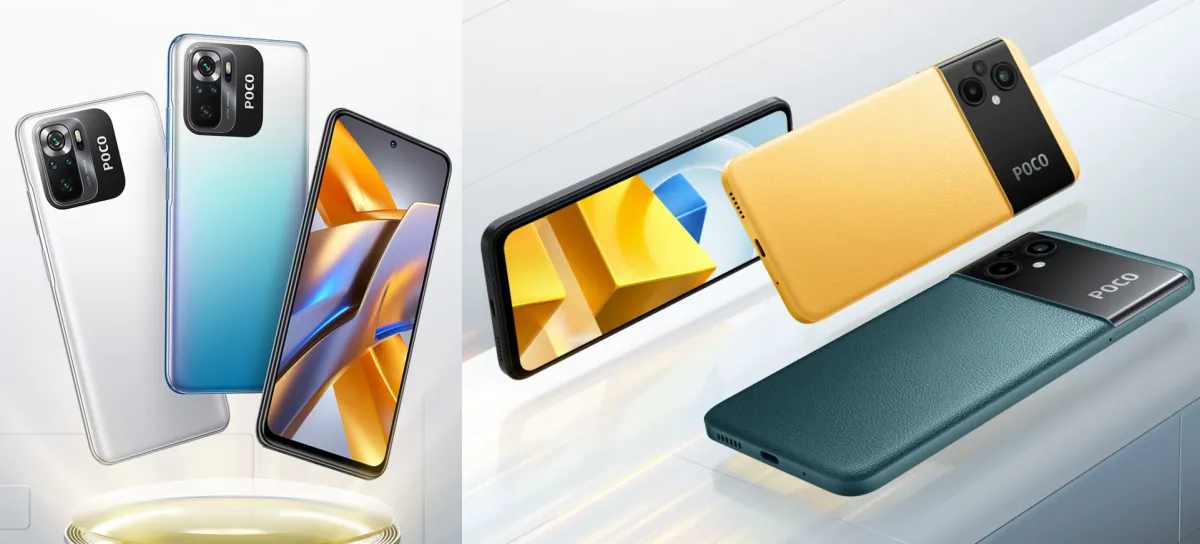
Read also: POCO M5s smartphone review: a clone, but a good one
Technical characteristics of POCO M5
- Display: 6.58″, IPS, 1080×2408 resolution, 20:9 aspect ratio, 401 ppi, 500 nits brightness, Corning Gorilla Glass 3, 90 Hz refresh rate
- Processor: Mediatek Helio G99 (6 nm), Octa-core (2×2.05 GHz Cortex-A76 & 6×2.0 GHz Cortex-A55), Mali-G57 MC2 graphics
- Operating system: Android 12, MIUI 13 shell
- Memory: 4/64, 4/128, 6/128 GB UFS 2.2, microSD slot (separate – 2 SIM + memory card)
- Battery: Li-Pol 5000 mAh, fast charging 18 W
- Main camera: 50 megapixels, f/1.8; 2 megapixels f/2.4 (macro); 2 megapixels f/2.4, (depth sensor)
- Front camera: 5 megapixels, f/2.2
- Network and data transfer: 2 Nano-SIM, GSM 900/1800/1900, 3G, 4G LTE, Wi-Fi 5, Bluetooth 5.3, A2DP, LE, A-GPS, GLONASS, BDS, GALILEO, IR port, USB Type-C, NFC
- Sensors: Fingerprint scanner (in the side key), accelerometer, gyroscope, proximity sensor, digital compass
- Other: 3.5 mm jack, stereo speakers
- Body: plastic, Corning Gorilla Glass 3
- Dimensions: 164.0×76.1×8.9 mm
- Weight: 201 g
Package contents
In the box you’ll find the phone itself, a 22.5-watt battery, a cable, a needle for removing the SIM slot, a silicone case, documentation, and a screen protector.
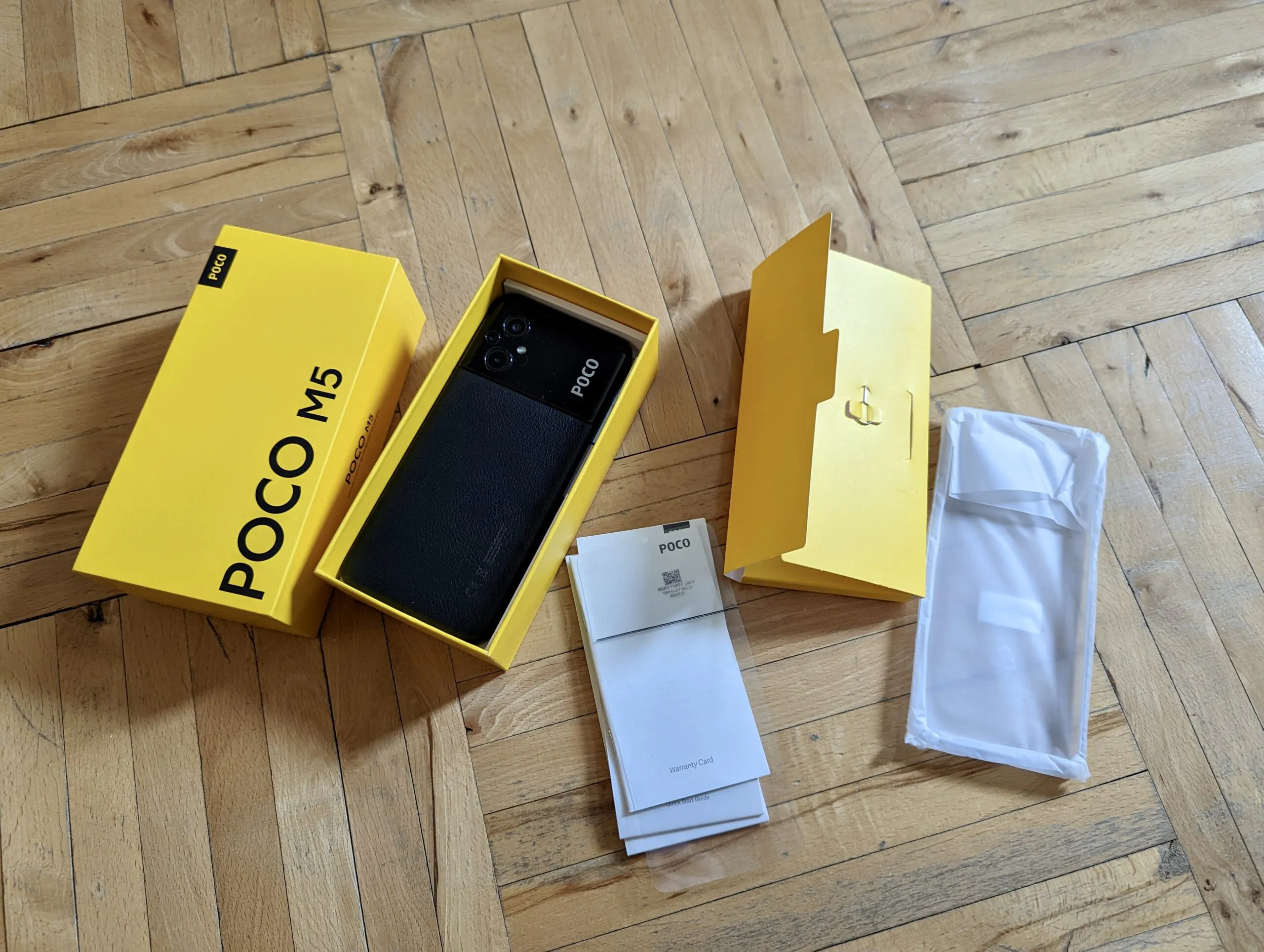
I was surprised to see a separate film in the POCO M5s package, because usually when a phone receives a protective film, it is glued right at the factory – perfectly, without dust and bubbles. Why a separate one? Only to save money.
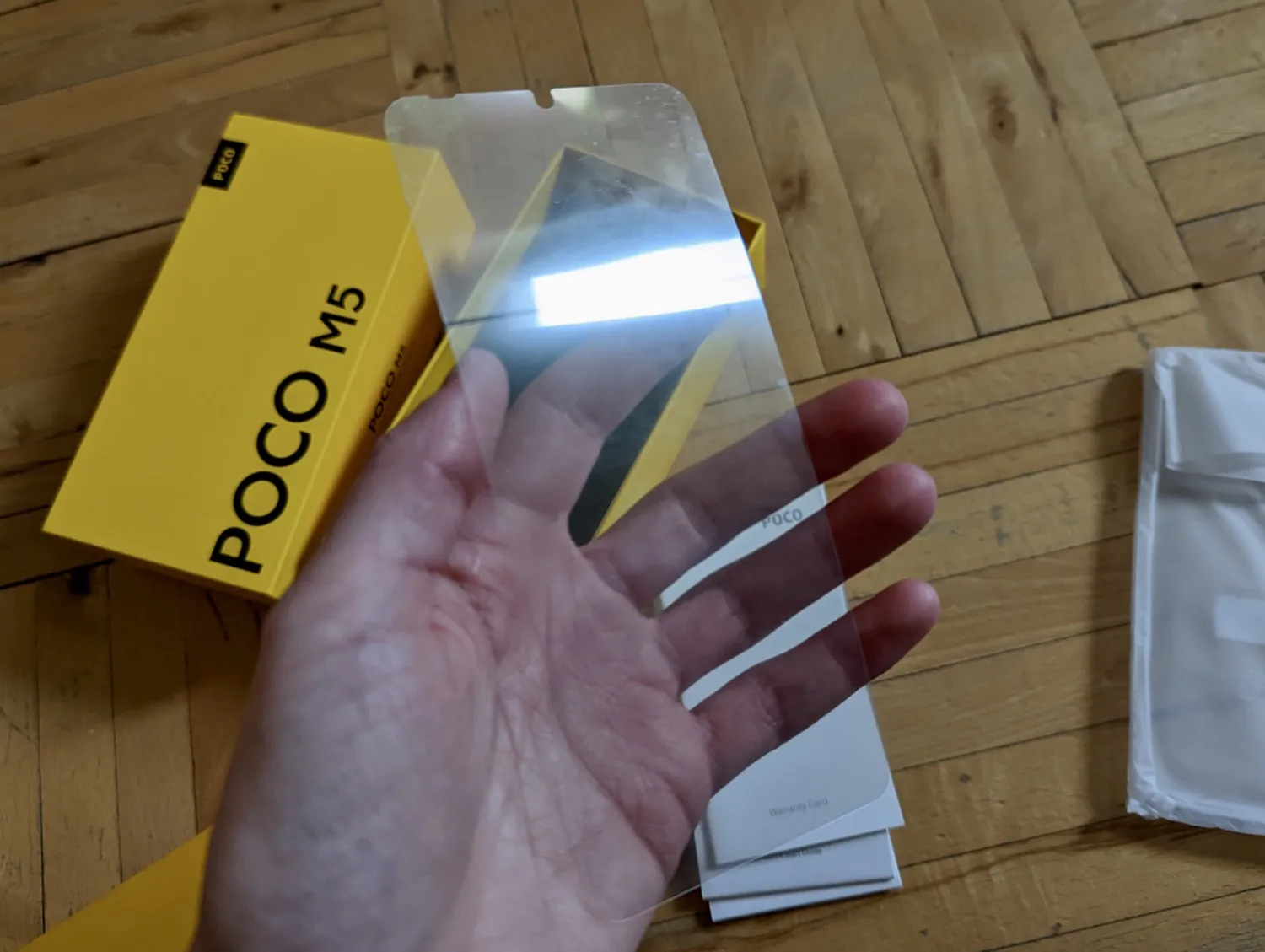
Fortunately, there is a charger. For some reason, it was not included with the M5s.
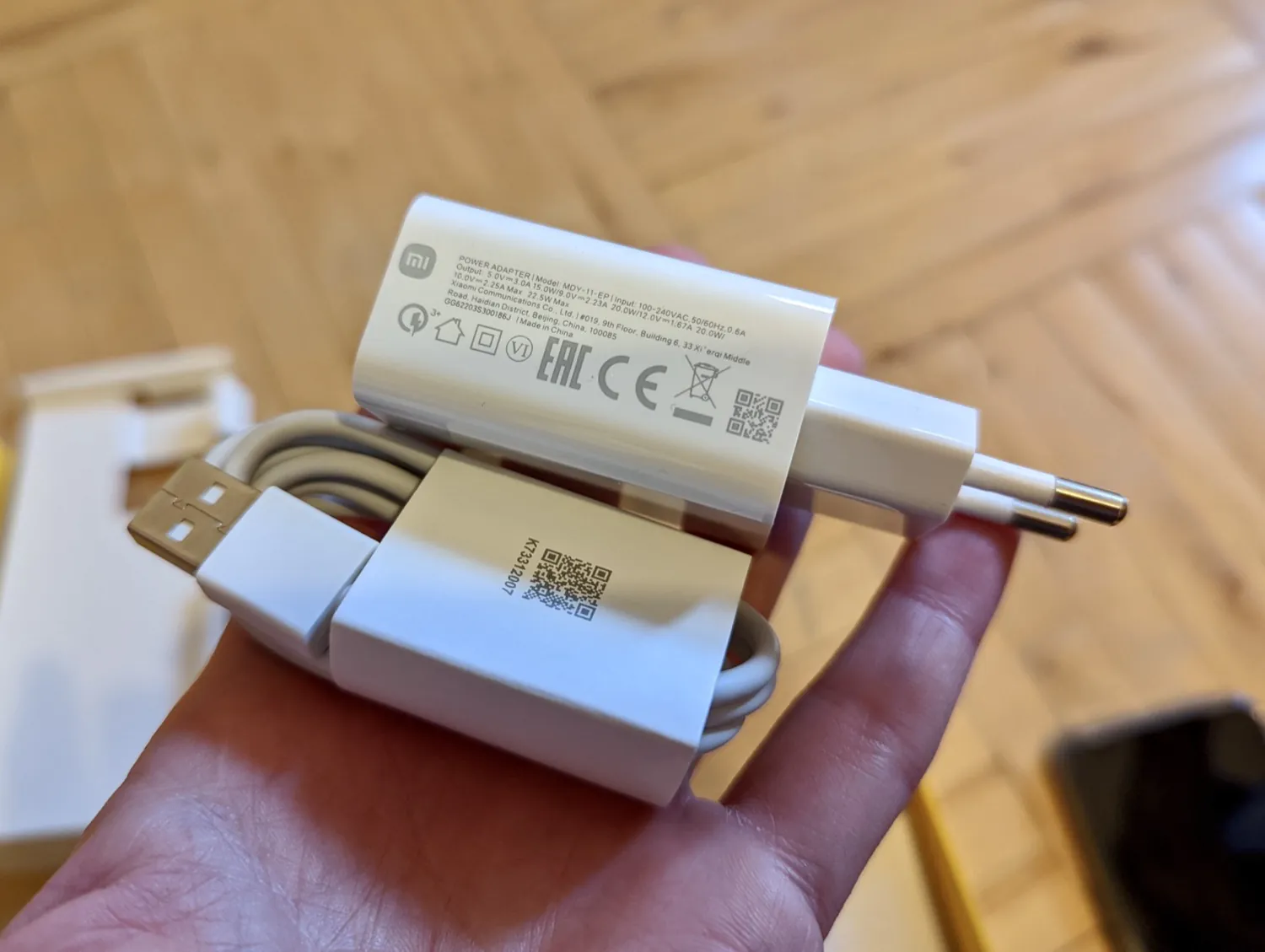
I liked the case – it protects the corners, screen, cameras, and even the charging port.
Read also: Redmi Note 11 Review: Classical Budget Phone by Xiaomi
Design
The front is typical for a budget phone – a wide bottom bezel, a drop-shaped notch for the front camera. The screen is protected by scratch-resistant Gorilla Glass 3.
But the back panel definitely attracts attention against the background of similar budget models. It is, of course, plastic, but with a “skin-like” structure. It looks great, doesn’t slip in the hand, and doesn’t collect fingerprints or scratches.
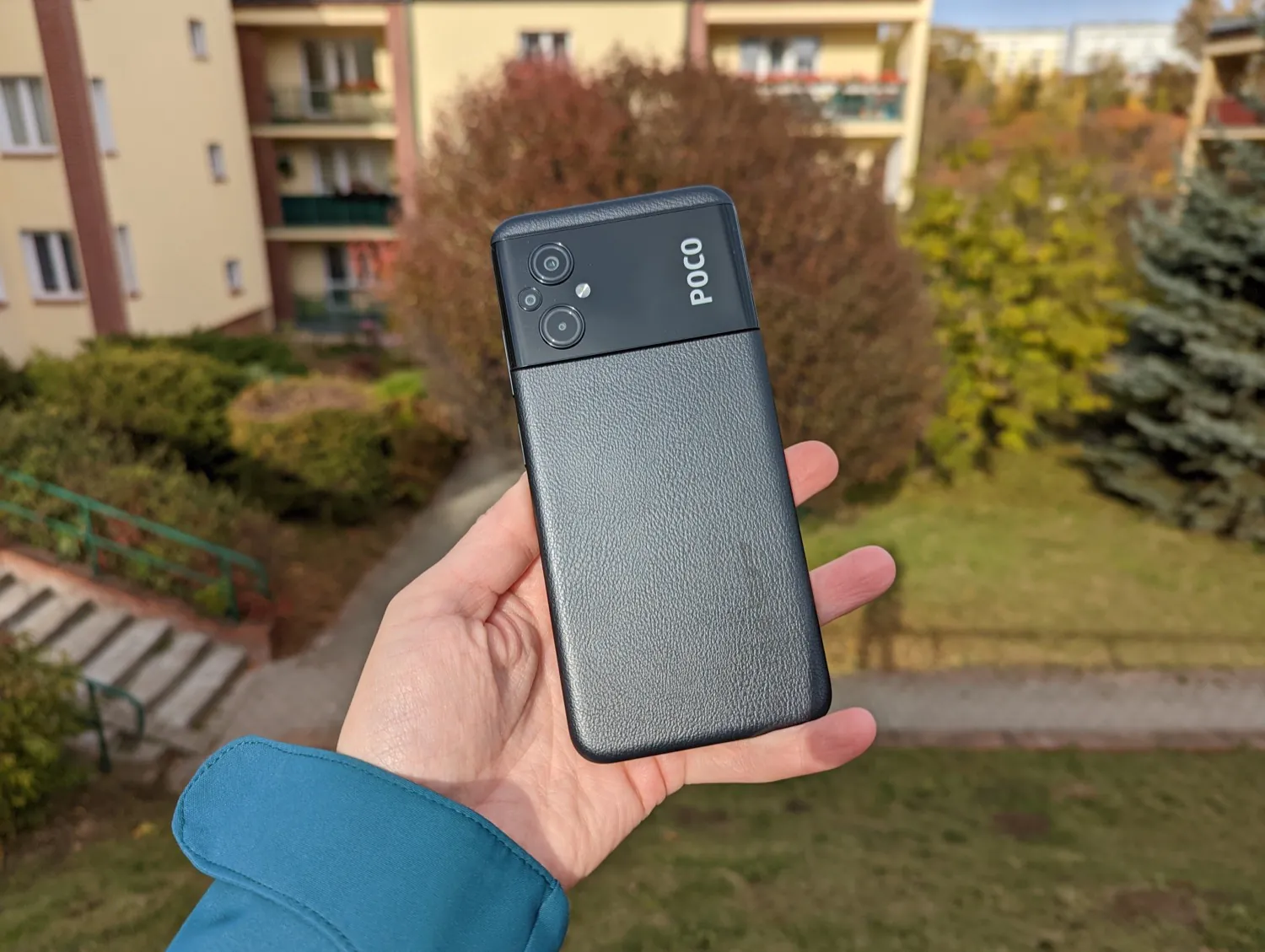

The camera unit on the wide panel looks interesting and somewhat reminiscent of the design of Pixel smartphones. The panel is raised above the body, but only by a millimeter. Its only drawback is that it sticks to dust.
On the left side of POCO M5 there is only a card slot, on the right side there is a volume button and a power/lock button with a built-in fingerprint sensor. The sensor works quickly and without misfires.
На нижньому торці ви побачите отвір мікрофона, роз’єм для зарядки і прорізи динаміків. На верхньому торці ще один мікрофон і роз’єм 3,5 мм.
As you can see from the photo, the device has flat side edges, which gives it a more modern look.
The phone is quite large, and it’s not very convenient to operate it with one hand. The thickness is not a record either – almost 9 mm. And the weight of 200 g is considerable.
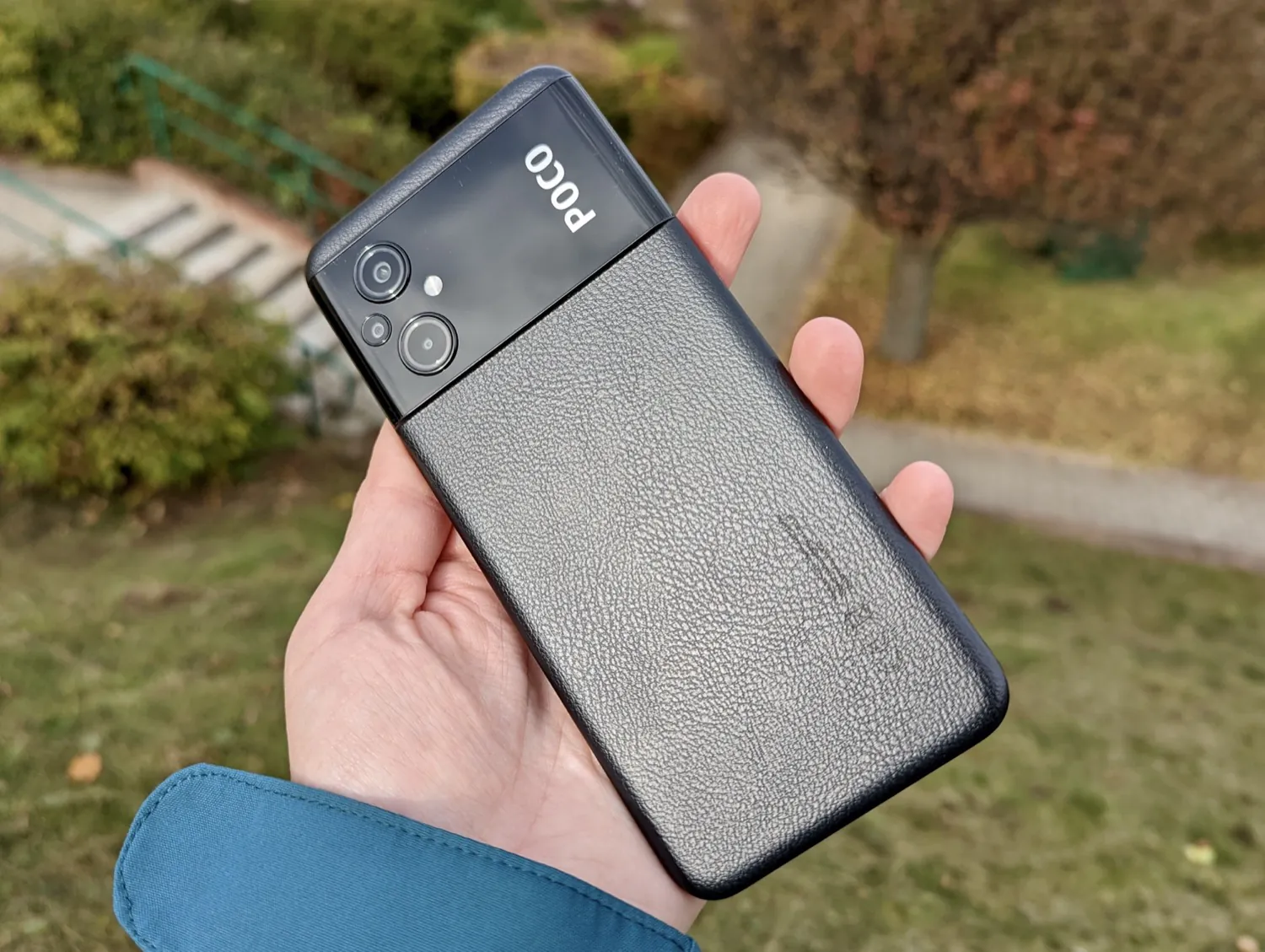
The build quality is perfect. The manufacturer doesn’t say whether the device has basic protection against water and dust splashes (while POCO M5s boasts IP53 compliance), but judging by the rubber seal on the card slot, it’s something like that.
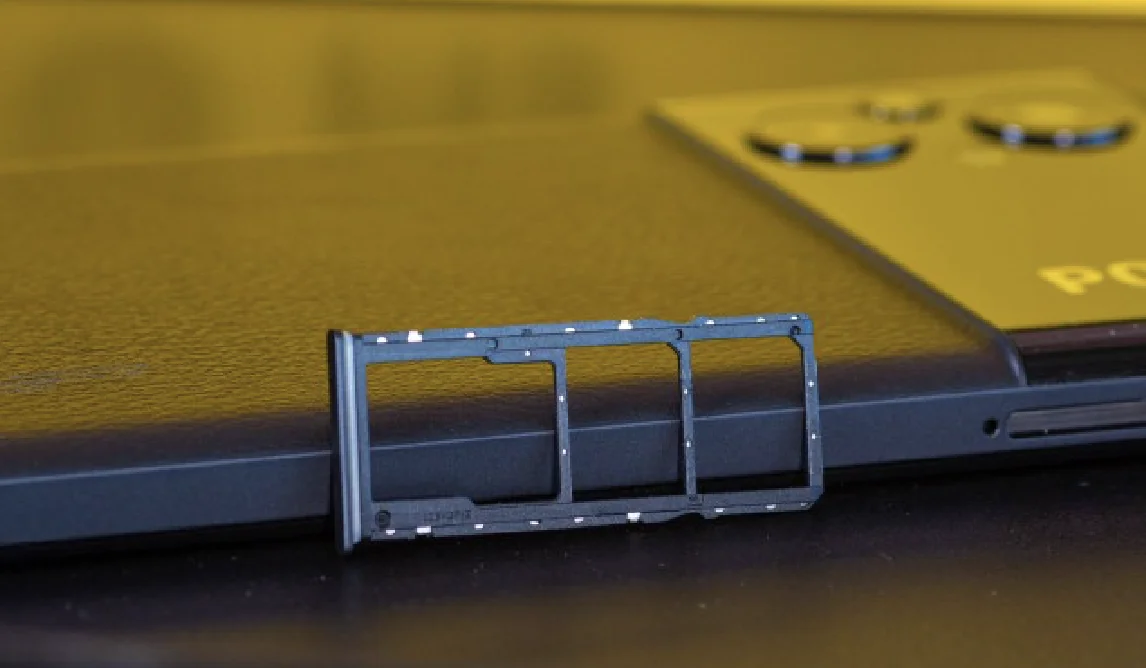
The available colors are black, green, and yellow. The latter looks particularly cool, but I haven’t seen it in person.
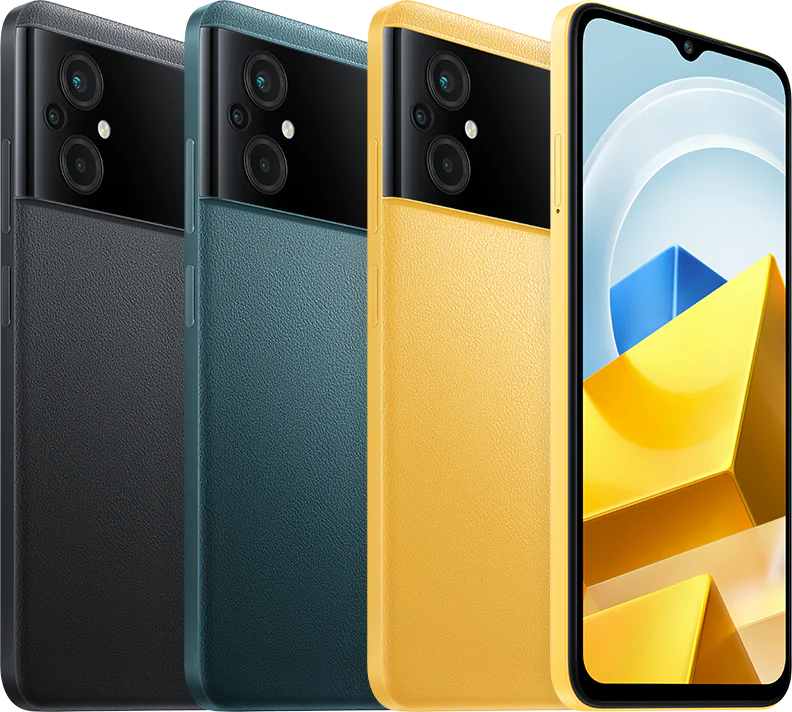
Read also: POCO X4 Pro 5G review: not a flagship killer anymore
POCO M5 screen
Again, let’s remember the M5s – it had a juicy and beautiful AMOLED display, but with an outdated 60 Hz refresh rate, even among budget phones. But the hero of the review has a more modern and smooth 90 Hz. However, the matrix is not bright and high-quality AMOLED, but IPS.

This is not to say that everything is bad, the color reproduction is decent, the clarity is high, but the peak brightness is clearly not enough in bright light, and the viewing angles are not the best, the picture darkens or fades when you tilt. However, this will definitely not be a problem for the target audience of this phone – undemanding users.
In the screen settings, you can choose the type of color rendering (more or less saturated), change the system theme (light/dark), activate ebook mode, adjust the color temperature, select the refresh rate, text size, and auto-rotate.
Read also: POCO M4 Pro 5G review: mid-ranger with 90 Hz and stereo
Hardware and performance
POCO M5 is powered by an 8-core Mediatek Helio G99 chipset made on a 6 nm process. In the M5s, we met the G95, which is supposed to be a little simpler, but in all processor comparisons, the chips are almost neck and neck. Unless the 6 nm processor is more energy efficient. And in benchmarks, the M5 gains a little, but more “parrots”.
In general, we have a great new generation chip for state employees. It “tears to rags” almost all Snapdragon 600 series and is only slightly inferior to the Snapdragon 695. In the manufacturer’s lineup, it is no worse than MediaTek Dimensity 700, except that it loses out to it because it lacks 5G.
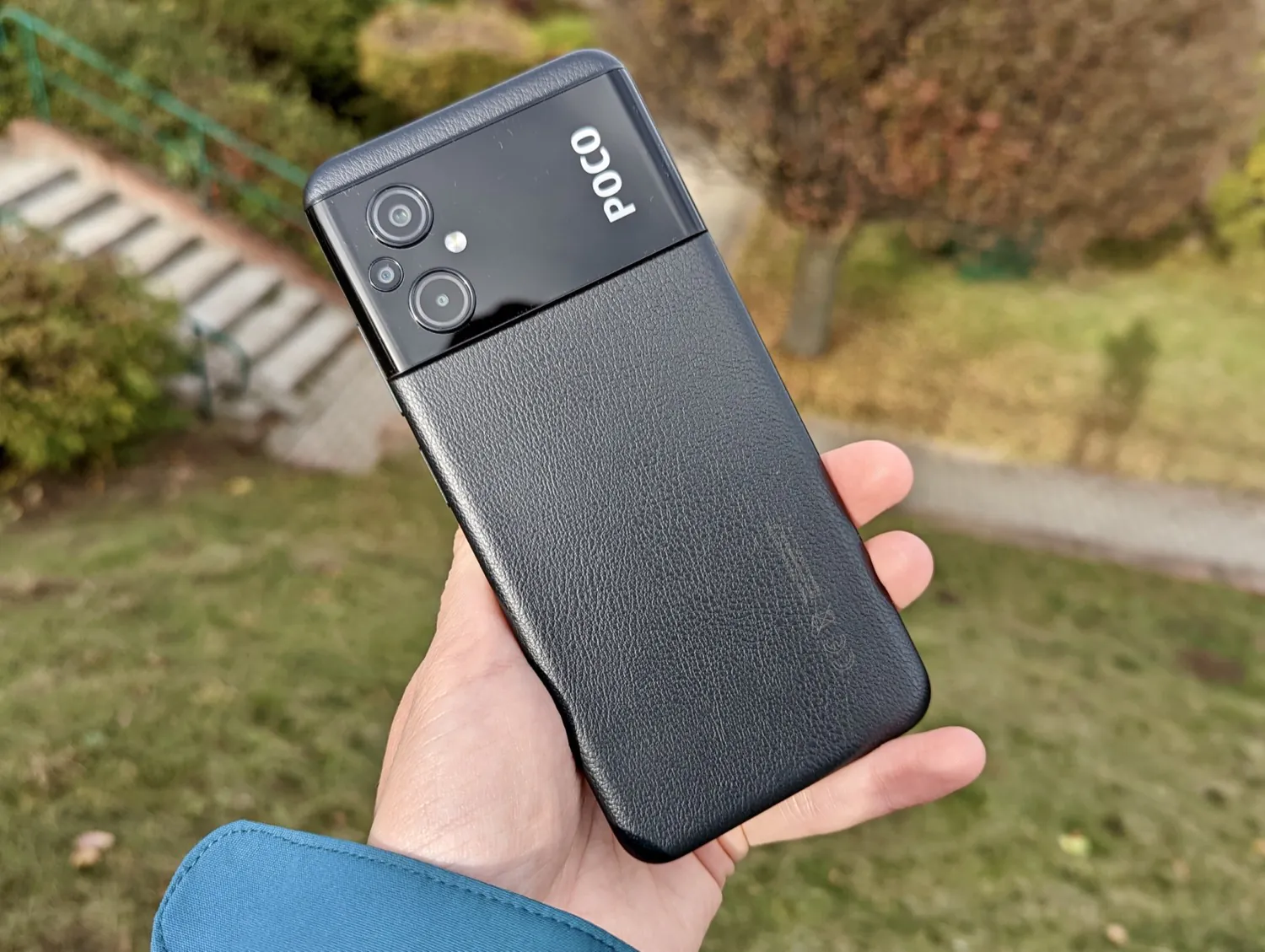
All basic tasks are performed very quickly, and any user will be satisfied. And POCO M5 can run popular games, although not all of them at a high level – this is not a gaming smartphone, after all. I tested it with PUBG Mobile, World of Tanks Blitz, Real Racing 3, and Fortnite. The first three are flying.
Benchmark results of the test model:
- Geekbench: single core – 548, multi core – 1894
- AnTuTu: 386314
- 3DMark Wild Life Vulkan 1.1: 1322
The smartphone is available in three versions – with 4 GB of RAM and 64 or 128 GB of storage or 6/128 GB. We tested the 6/128 GB version. However, if you want to save money and get a model with 4 GB of RAM, it won’t upset you with lag either, judging by the experience of the M5s test. Moreover, in the settings there is an option to expand the RAM by 2 GB at the expense of permanent memory, which is active by default. Of course, such a “paging file” is not as fast as regular hardware, but it’s better than nothing.

As for the storage, 128 GB will be enough for most people, and if you take the younger version with 64 GB, you are unlikely to encounter any inconveniences, since you can use both SIM cards and a memory card at the same time.
Read also: Redmi Buds 3 Lite TWS Earphones Review: Cheap But High-Quality
POCO M5 cameras
Compared to POCO M5s, the camera set is simpler. There are fewer megapixels, weaker modules, and no wide-angle. The main sensor is 50 megapixels, there is also a 2 megapixel macro and a 2 megapixel auxiliary depth sensor. In short, there is only one useful module.

The photo quality is not outstanding, but considering the price, it is acceptable in terms of clarity and color reproduction. Daytime photos in excellent lighting are quite decent, but the less light there is, the more noise and blurred objects.
ALL EXAMPLES OF PHOTOS FROM POCO M5 IN ORIGINAL RESOLUTION
The interface has a zoom option, but it’s better not to use it, the quality is terrible (the thumbnails below don’t fully convey this). You can just as easily take a crop photo yourself.
Night shots are of poor quality. Turning on Night Mode will result in sharper and slightly brighter photos, but in many cases, noticeable digital noise will appear. Here are examples, night mode on the right:
Photos taken with a macro lens may even look good on thumbnails, but this is a deception. They have poor color reproduction, they are blurry and poorly detailed, because 2 megapixels is too small for a normal photo.
ALL EXAMPLES OF PHOTOS FROM POCO M5 IN ORIGINAL RESOLUTION
It’s a pity that the M5 doesn’t have a wide-angle camera, as sometimes it’s useful to fit more into the frame than the main module can see.
POCO M5 can record video in 720p or 1080p at 30 frames per second. Since we have a budget processor, there is no choice of a higher resolution. The video quality is rather poor: the color reproduction is uninteresting, the detail is low, and there is almost no stabilization. However, it is unlikely that the target audience of this inexpensive phone will shoot videos for popular YouTube channels, but it will be more than enough to record a “watchable” video with a cat or a child. Examples of videos with POCO M5 can be found at the following links: daytime, nighttime.
The front camera is not the best either and is very sensitive to lighting. You can take a photo, but you’re not going to want to put it on your avatar. Although I’m still used to more expensive models, this may not matter to users of budget smartphones.
The camera application is standard for MIUI, with all the necessary shooting modes: photo, video, portrait, manual, night, 50 megapixels (by default, images are reduced to 12 megapixels for better quality), video clip, panorama, documents, slow motion, time lapse, long exposure, and dual video.
Read also: Redmi Note 11 Pro 5G review: New design, 5G, fast charging
POCO M5 battery
The modern standard for budget phones is 5000 mAh, and POCO M5 does not deviate from it either. It supports fast charging, but only 18 watts, which is not fast by today’s standards. Other inexpensive models offer 33-60 watts and even more. In half an hour, the M5 gains only 24% of its charge. It will take almost two and a half hours to charge a fully discharged battery to 100%.
But the model also works for a long time. With active use of the web, social networks, camera, occasional calls, watching videos, listening to music, and casual games, the device can easily withstand a full day. With a lighter load, it will last two days!
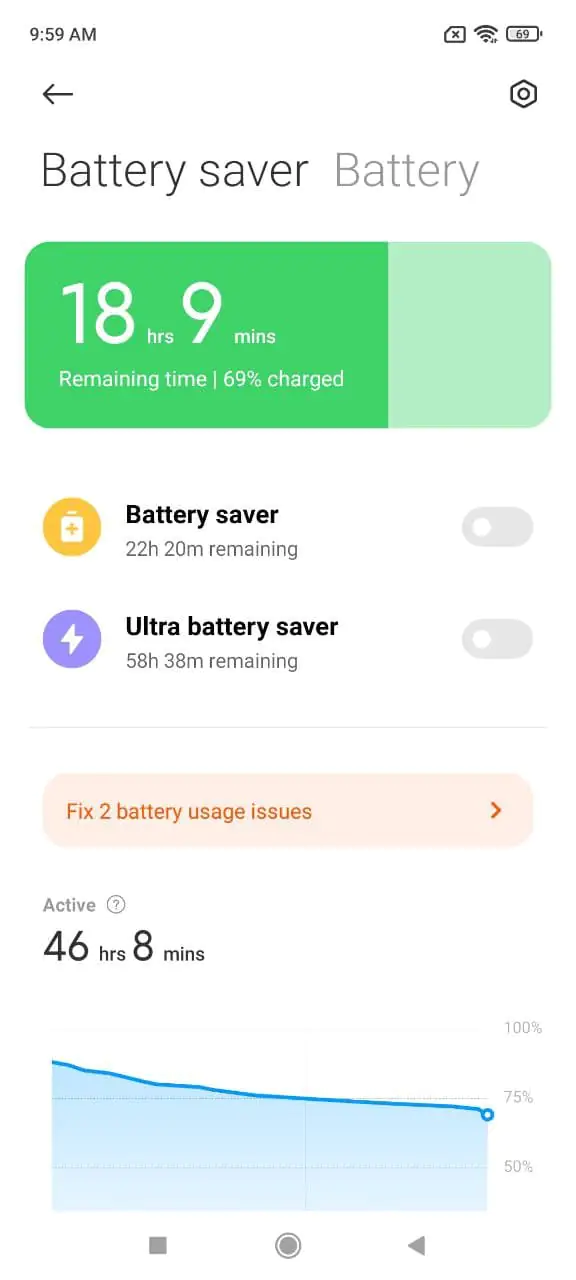
Data transmission, sound
POCO M5 supports 4G LTE, Wi-Fi 5, Bluetooth 5.3, A-GPS, GLONASS, BDS, GALILEO, and has an IR port (for controlling home appliances), a USB Type-C connector, and NFC for contactless payments. There is no 5G, but not everyone needs it either.
And here’s an unpleasant detail – there is no stereo sound. Although the M5s has it, and many other budget phones for the money too. So there’s only one speaker, but it sounds loud, clear and high-quality, even producing some bass.
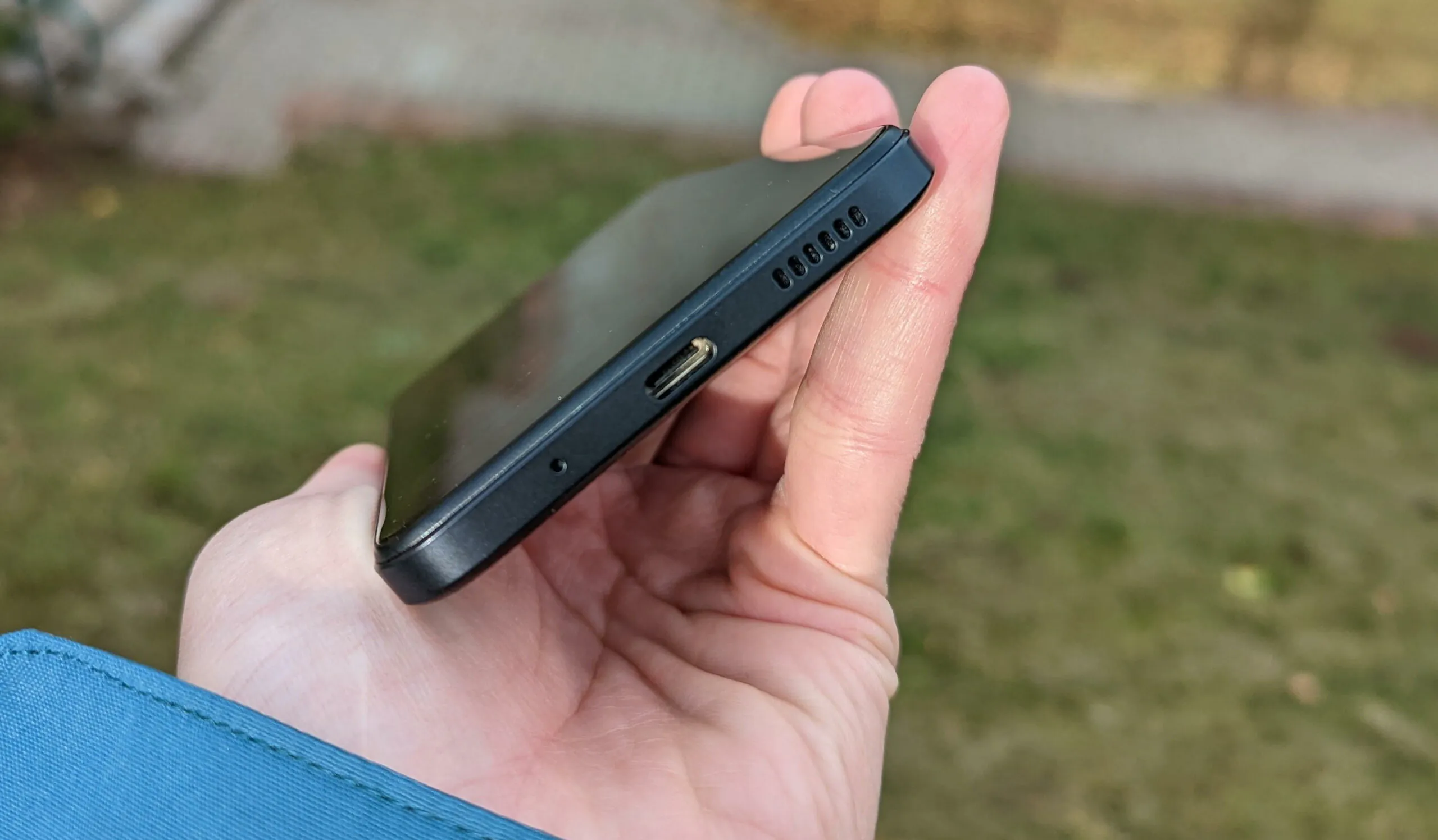
In your phone’s settings, you’ll find sound effects, presets, and an equalizer.
Read also: Xiaomi Smart Band 7 Pro Review: It Breaks the Bank
Software
POCO M5 runs on the proprietary MIUI 13 shell installed on top of Android 12. The MIUI shell works quickly and smoothly, looks nice, is thought out in every detail, contains a huge number of settings and additional features.
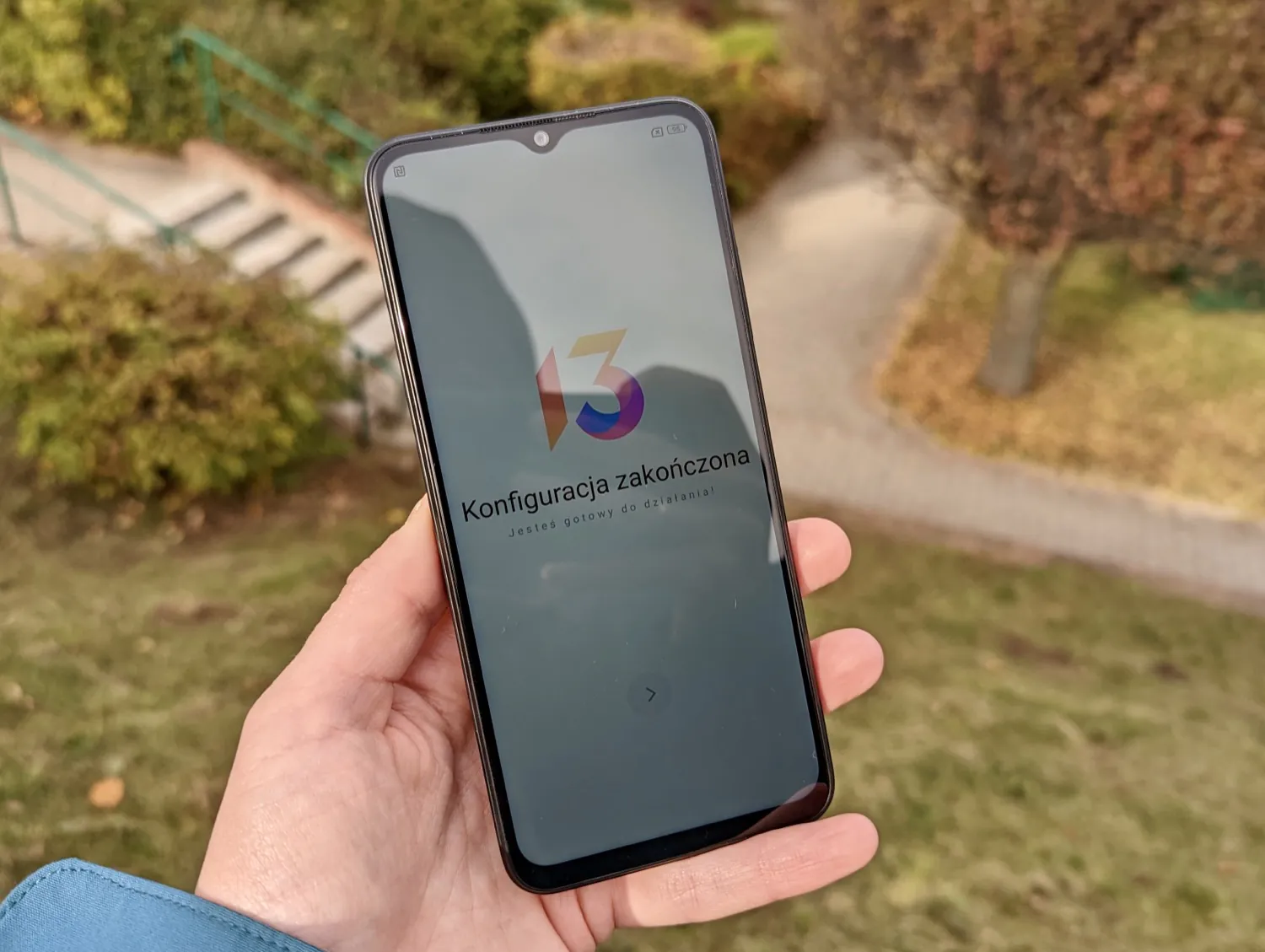
We described the software part in detail in the Xiaomi/POCO reviews, so we won’t dwell on it again, I’ll just give you a link to the relevant section in the material about POCO M5s.
Conclusions
Everything around us is getting more expensive, so it’s not so easy to create cheap smartphones. After testing the M5, I can say that its brother, the M5s, although a reissue of a year-old model from the Redmi line, looks more interesting (stereo speakers, better camera quality and a wide-angle module, 33W charging, AMOLED screen) at a slightly higher price. Among the advantages of the M5 are a slightly more powerful processor, 90 Hz screen refresh rate, and, of course, an unusual design. And yes, there’s also a charger in the package, which was a pity for the M5s.
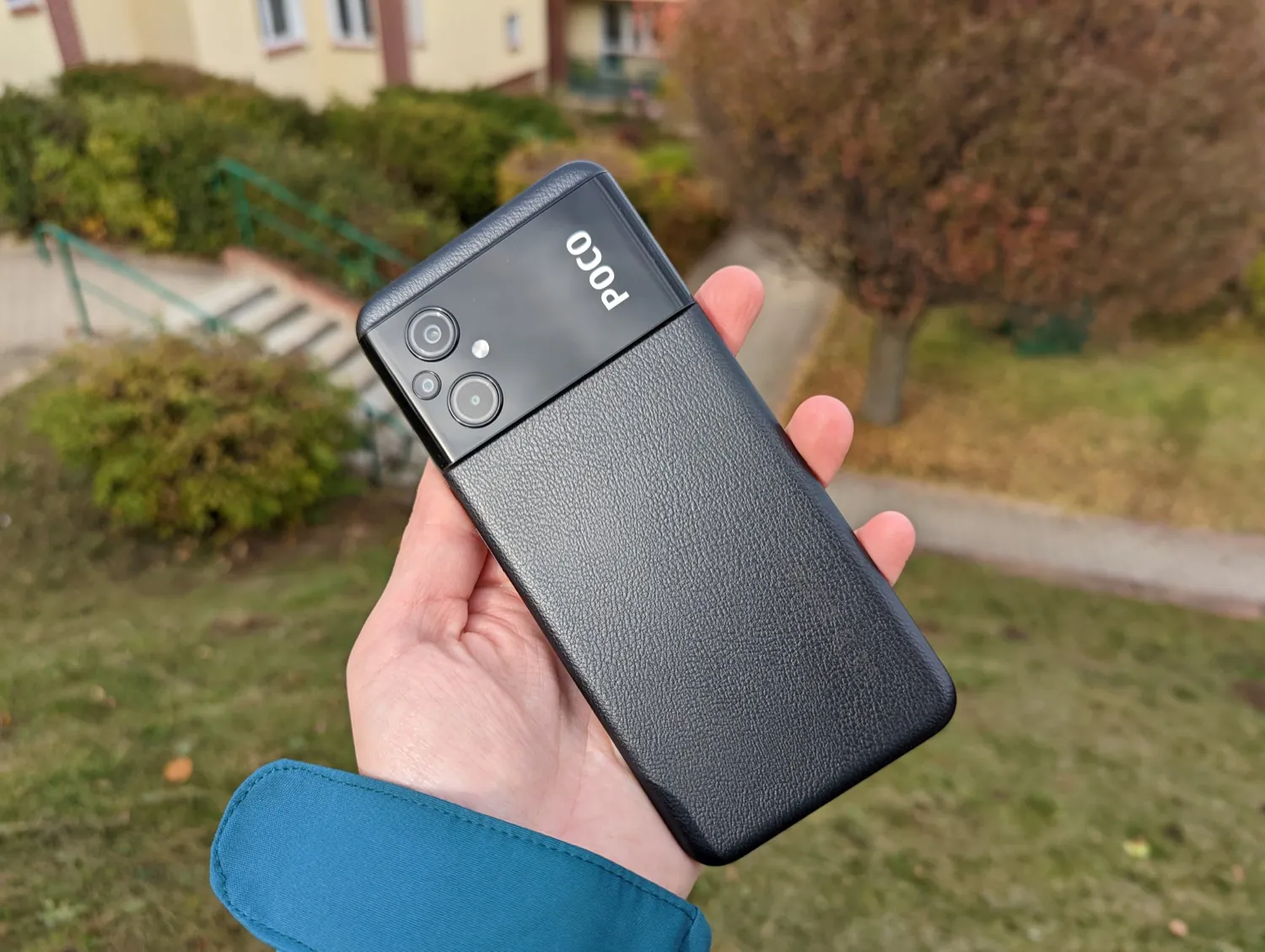
At first glance, it seemed to me that POCO M5 would be more attractive if it were cheaper. However, I repeat, everything is getting more expensive. And if you look at the current price with discounts, the model has no adequate competitors. And the ones that do have a weaker processor or some other aspects that are critically flawed. And to get something better, you have to pay more.
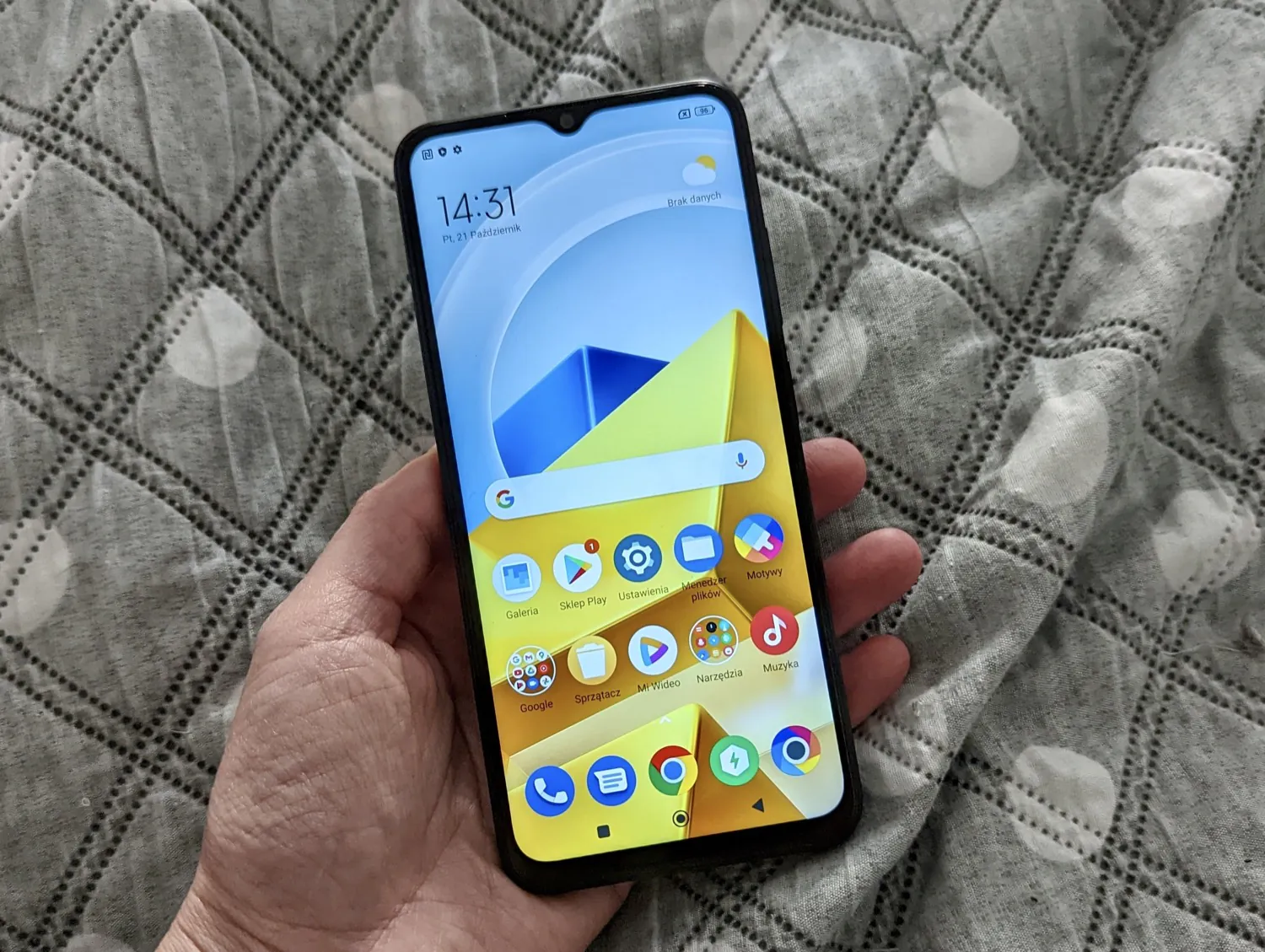
Among the POCO M5‘s competitors, the Samsung Galaxy A13 (not the most advanced hardware, but better cameras and a great shell) and Redmi Note 11 (33W charging, AMOLED screen, 90 Hz) are worthy of note. However, I still think it’s better to overpay for the POCO M5s, or its twin from last year, the Redmi Note 10S.
Read also: Redmi Note 10S review: Affordable smartphone with NFC and Super AMOLED
Advantages of POCO M5
- Interesting design and colors of the case
- 90 Hz screen refresh rate
- Excellent life time from a single charge
- High performance for a state employee
- Good daytime photos for a budget phone
- There are all possible additional options – 3.5 mm jack, separate microSD slot, NFC, IR port, FM radio
Cons of POCO M5
- Not the best color reproduction of the screen
- Poor readability in the sun
- The speaker is mono, although of good quality
- Low-quality photos in low light, mediocre selfies
- There is no wide-angle camera
Where to buy POCO M5
Read also:
- OPPO A54s Review: Budget Phone With Large Battery And Triple Camera
- Motorola Moto G32 review: Balanced and affordable
- Huawei nova Y70 Review: Decent Budget Phone with 6000 mAh



